#Namify
Text

Say goodbye to brainstorming and hello to Namify's AI-powered free business name generator! 🌈
#Namify#BusinessName#AI#NamifySuccess#BusinessNameIdeas#AISolutions#NamifyPro#BusinessNameGenerator#AIInnovation#NamifyInspiration#BusinessNameCreation#AIFuture#NamifyYourBrand#BusinessNameTips#AIAdvancements#NamifyNaming#BusinessNameConsulting#AIIntegration#NamifyNamingTool#BusinessNameBranding#AIRevolution#NamifyExperts#BusinessNameDevelopment
0 notes
Text
5 Steps to Optimize Your Facebook Page as a Moving Company

Original Source:
https://moversboost.com/5-steps-to-optimize-your-facebook-page-as-a-moving-company/
How to Optimize Your Facebook Page for a Moving Business
If you want to make your Facebook Page work effectively for your moving business, follow these steps:
1. Post valuable content
Share moving tips, customer reviews, and industry news.
Ensure the content speaks to your audience and provides value.
Avoid posting irrelevant or low-quality content.
2. Respond promptly and professionally
Engage with comments, messages, and reviews.
Show your customers that you value their feedback.
Respond in a timely and professional manner to build trust and loyalty.
3. Optimize your Facebook Page
Keep your contact details, services, and pricing up-to-date.
Ensure the information provided is accurate and reliable.
Present yourself as a professional business.
4. Utilize Facebook advertising
Reach a wider audience with targeted ads.
Target potential customers based on their location, interests, and behavior.
Maximize the reach and impact of your Facebook Page.
Optimizing your Facebook Page is crucial for its success. Now, let’s explore five specific ways to optimize a mover’s Facebook business page.
5 Ways to Optimize a Mover’s Facebook Business Page
1.) Add a profile picture and a cover photo
A.) Profile picture:
Use a square image with a minimum size of 180 x 180 pixels.
Ensure it is readable even at 36 x 36 pixels in the mobile newsfeed.
Incorporate your visual branding, including your logo and color palette.
Create a professional-looking profile picture using a free tool like Namify.
B.) Cover photo:
Display a high-quality image with a minimum size of 400 x 150 pixels.
Consider using seasonal or relevant images to keep your page fresh.
2.) Update your Contact button
Choose a relevant call-to-action button below your cover photo:
Contact Us
Learn More
Message Us
3.) Select the appropriate template for your business
Choose the “Services” template for your moving company:
Enable reviews as they contribute to search engine algorithms.
Facebook reviews hold the second most importance after Google Business Page reviews.
4.) Complete your page information
Fill out all the necessary details to provide comprehensive information to visitors:
Add your business address, phone number, website, and email.
Include a concise and compelling description of your moving services.
5.) Post content and engage with your audience
Regularly share relevant and valuable content, such as:
Moving tips and guides
Customer testimonials and success stories
Industry news and updates
Engage with your audience by responding to comments, messages, and reviews promptly and professionally.
By implementing these optimization strategies, your Facebook Page will become a powerful tool for your moving business.
0 notes
Text
How to Foster Employee Creativity to Keep Your Marketing Strategy Innovating
Tutorials and tips on Content and Video Marketing.
Digital marketing is hard to organize, but it is even harder to innovate.
Once a business discovers a tactic that really works well, it becomes too easy to just focus on that one method and pour all your resources into it.
I’ve seen this happen again and again for a good reason: It is profitable. It is too easy to keep doing what works well, so ultimately your team has no time to invest into learning anything new.
And yet, don’t put all your eggs in one basket, even though it sounds cliche. Yet, it’s still the truth, moreso with digital marketing which keeps evolving and changing at an unprecedented pace.
We’ve seen multiple well-explored marketing channels cease to exist (remember, Myspace, StumbleUpone and Digg?) And even search engine optimization that traditionally is the focus of most online businesses has long become too unpredictable. We’ve seen too many businesses perform lay-offs once their websites lost organic visibility over yet another update.
Finding Innovation within Your Business
This is why investing into marketing innovation is investing into the future.
The only way to keep your business afloat when your main marketing channel fails is to explore various newer options. Thiswill allow you to discover alternative sources of traffic and conversions.
Generating fresh marketing ideas is not something a single person can master on a continuous basis. Actually, from personal experience, agreat marketer is likely to find a single great marketing idea throughout their whole career. Yes, normally, it’s one idea per a successful career.
This is why picking someone else’s brains is such a good idea. Even experienced marketers should be willing to learn!
Your own team is the first place to look. They already know your business and your product, and many of them likely know your customers as well. They are likely to have lots of marketing ideas, or they may find them if they are given an opportunity. Here’s how:
Let them start independent mini-projects
My first job was in customer service. Less than a year into the job, my boss suggested that I start an SEO blog and learn SEO. This is how my career in SEO started, and this is why I am a big believer in letting employees own projects.
The well-known Google’s 20% policy comes to mind here: Google allowed its employees to spend 20% of their work time working on independent mini projects. Lots of notable projects were born thanks to that policy, including Gmail, AdSense and Google News.
Obviously, only a small percentage of those projects will really benefit your company’s bottom line but if you encourage your team members to align those projects with what your business is doing, that will also be a learning curve that will enrich your marketing strategy with new tools and experiments.
For example, in my old days as a customer support rep, I set up a free blogspot site to upload our customers’ product demonstration pictures they were sharing with me in exchange for a coupon. I was responsible for designing, updating, promoting, etc. that blog and it became an impressive collection of visual and video reviews for the company I worked for. And it cost my employees nothing apart from my time which I was happy to spend.
The Cost of Fostering Employee Creativity
Side projects don’t have to be a huge investment.
Your employees can set up mini-sites for free;
There are lots of actionable and free resources they can use to educate themselves on marketing projects online: Here’s a pretty comprehensive one on SEO, here’s another one on link building, here’s one on building a social media strategy;
New tools often come with free trials or freemium versions they can use until those tools are proved really beneficial to your marketing strategy;
Custom domains can be as affordable as $2 per month: Namify can help you find one.
Even technical tasks can be handled independently. One can set up a website with no technical skills whatsoever these days. There are lots of free plugins and free tools that can replace paid software.
To keep these mini-projects organized, consider using some kind of SEO productivity platform that is able to consolidate data for many sites. SE Ranking is a great and affordable option that offers everything from position tracking to traffic monitoring for multiple websites within the same dashboard:
Encourage idea sharing and collaborative brainstorming
Digital marketing is only effective if it is integrated into each and every department of your business.
Employees working in customer service and sales can offer lots of insight into your customers, what they are struggling with, which questions they have and which problems they are solving. All of these insights can make your content strategy better focused on what your target audience is really searching.
Teams that are involved in product development can contribute to your marketing strategy by informing everyone of product updates, advantages of your product and unique features they are working on. This will help marketers position your product in the most beneficial way.
Dev teams can help you understand your website better, how users interact with it and how to assist them in having a more positive experience with your brand.
In many organizations there’s a disconnect between a marketing team and the rest of the company, even if each team consists of 1-2 employees. In other words, organizational silos are a big problem for any business, big or small.
Hosting regular brainstorming meetings to allow employees to share ideas and insights is a solid first step in fostering collaboration. Cross-company chats will be helpful as well, especially for identifying those quiet talents that don’t speak in public but have lots of ideas to share. Solutions like Slack require no technical set-up and are easy to integrate into any business communication.
Give ideas spotlight
Not all employee initiatives will turn successful. Lots of marketing tactics provide non-tangible benefits (e.g. branding), many of them become obviously beneficial after some (or a lot of) time (e.g. customer satisfaction). Not everything can be measured.
In fact, there are very few marketing tactics that provide obvious measurable results in a short period of time (the only one that comes to mind is PPC). When it comes to digital marketing, it is often about contributing time and effort for months before one can actually see any results at all.
Therefore I don’t believe in rewarding marketing initiatives, especially when it comes to innovation and experiments.
Instead of rewarding, consider praising.
If your employee discovered a new idea and started implementing it, announce that to the company. Make it clear that you value your employees’ time and effort. Ask them how you can help and which resources or tools they need access to. Feeling valued is often more rewarding than a bonus.
Conclusion
Fostering employee creativity to spark Innovation is definitely an investment that not many businesses think they can afford. But considering the pace at which digital marketing is changing it is also a necessity.
Letting your employees help your marketing strategy innovate is the most affordable and effective way to prevent your business from going stagnant.
As an additional bonus, through encouraging initiative and collaboration, you are likely to find your team much more motivated and inspired which will inevitably result in better productivity and employee advocacy.
The above post “How to Foster Employee Creativity to Keep Your Marketing Strategy Innovating” was 1st provided here.
We trust that you found the above of help or interesting. You can find similar content on our main site here: superspunarticle.com/blog
Let me have your feedback below in the comments section.
Let us know which subjects we should cover for you in future.
youtube
0 notes
Text
How to choose blog name idea list without any hassle with namify.tech
Get different blog name idea list as lifestyle blog is always fun to read find unique lifestyle blog name idea list on namify research as per your requirement. To know more details you can visit our website.

https://namify.tech/blog-name-generator
0 notes
Text
3 Areas Namify Can Assist Your Business In
3 Areas Namify Can Assist Your Business In
3 Areas Namify Can Assist Your Business In
Source – www.etasr.com
When creating a business, few things are more important than choosing a name. After all, this title will be the first thing people think about in regards to your company. So, it’s essential to choose a perfect name. This is where Namify can come in handy. If this is something you’re interested in, here are three areas Namify can…
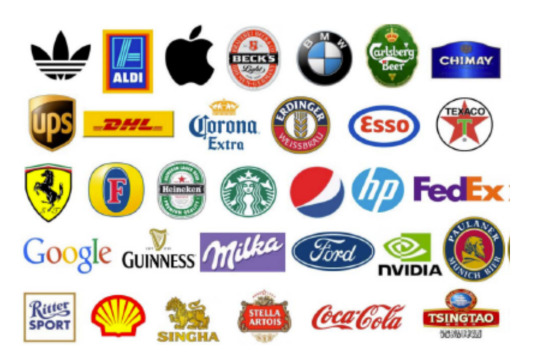
View On WordPress
0 notes
Text
How to Improve Organic Clickthrough for Your Content
Google search result pages are becoming more diverse and even interactive, which makes any clickthrough study out there much less reliable, because no two sets of search results are the same.
But how much control do writers and content creators have over how their content is represented in search? As it turns out, they do have quite a few options when it comes to optimizing their search snippets!
The anatomy of a standard search snippet
The standard Google search snippet has changed over the years, but in essence all the key elements are still there:
The clickable title or headline of the snippet (in blue)
The description of that page (about two lines long — it was lengthened for no particular reason a few years ago, but now seems to be back to two lines)
The URL path (used to be in green, now it is black)
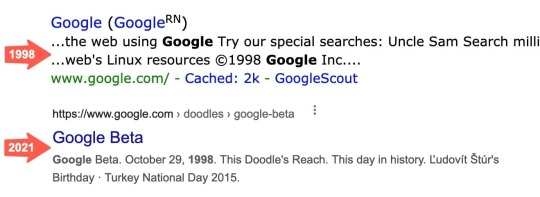
On a mobile device, there’s also a tiny logo next to the URL:

Here’s how much control you have over these standard elements of your search snippet (in the order they currently appear):
Logo
Google will use your site favicon when deciding which image to show next to your URL. This means that you have full control over this part of the search snippet.
URL path
These days, Google will do its best to show the meaningful URL path (almost like a breadcrumb) instead of simply the URL of the page. This consists of:
The domain: I don’t have any research to support this, but I personally always scan domain names when choosing what to click. That being said, your choice of a domain name may somewhat impact your clickthrough (if you do a particularly good job picking a snappy domain name that intrigues) and you do have full control over this part of the snippet. Tools like Namify specialize in finding exactly that type of domains that are short, memorable, and witty.
The breadcrumb or the truncated URL: You can use breadcrumb schema to force Google to use breadcrumb instead of the URL, and watch your Search Console to see if that helped clickthrough:
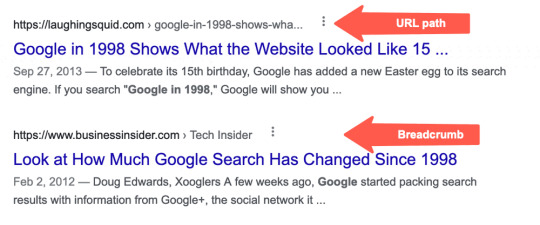
Title
Google used to rely on the page title to generate the title of the search snippet, but it has been rewriting that part more and more often recently.
That being said, it is still recommended to optimize your title to include keywords and entice more clicks — and hope Google will keep it intact.
Description
Google has been generating the search snippet description for years without using the associated meta description: recent studies show that Google ignores meta descriptions in about 70% of cases.
You may still want to create meta descriptions in case Google needs some clues, but expect them to figure this part out on their own.
Another way to try and trick Google into using your chosen snippet description is to create concise summaries of the content and add it at the beginning of the article. Using semantic analysis tools like Text Optimizer, you can also ensure these summaries are semantically relevant to the topic:

Now, let’s see how we can enhance that standard search snippet to let it stand out and attract more clicks.
Rich snippets for content-based pages
Rich snippets are search snippets enhanced with some additional details. Web publishers can control rich snippets by adding schema markup, so they are thus under website owners’ control.
Here are the types of rich snippets that will work for content-based pages:
FAQ page
Your page doesn’t have to be FAQ to qualify for this rich snippet. All you need to do is answer two or more subsequent questions somewhere on that page to use the code. There are several Wordpress plugins — including this one — that help you code that section.
HowTo schema
The HowTo schema was introduced for the DIY niche as a way to feature snippets that include step-by-step instructions.
These days, I see HowTo rich snippets implemented for just about any tutorial:

Video schema
More often than not, these rich snippets show up only on mobile devices, but they seem to be very common. A video rich snippet includes a video thumbnail:

Video schema will help you ensure the rich snippet is indeed generated, although I’ve seen dozens of cases when Google creates a rich snippet once you simply embed a video on the page, no schema required.
That being said, using the rich code won’t hurt, especially given there’s an easy video schema generator for you to create a code easily.
Structured snippets
Structured snippets are less popular than rich snippets, even though they are very common on search.
Structured snippets import tabular data to formulate a more informative search snippet:
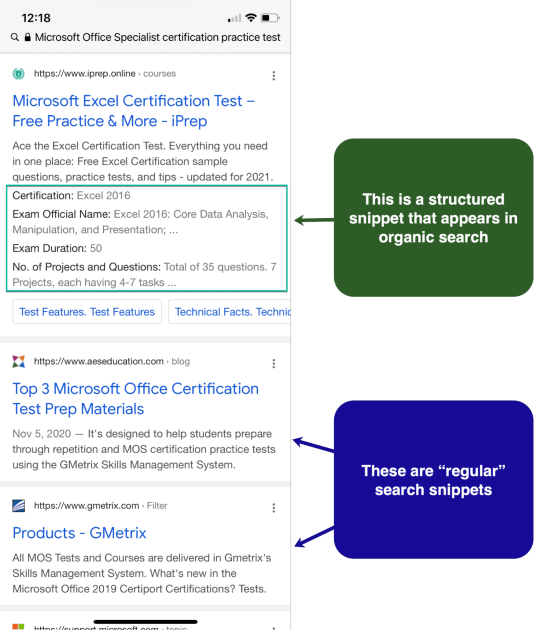
All it takes to qualify for this type of a snippet is to create an HTML table. It is a good idea to use tables for summaries, feature comparisons, lists, etc.
Image thumbnails
Image thumbnails are very rare on desktop. Yet on mobile devices, images show up inside most search snippets:

There’s no particular optimization tactic here, but there are best practices that may or may not help:
Obviously, make sure there’s at least one image on your landing page (make it featured on Wordpress).
Compress your image to make it load faster.
Specify the thumbnail using the meta tag.
Dates
Google shows dates within a search snippet when they think this may be useful to a searcher. Obviously, dates may have a big impact on clicking patterns: Based on the research by Ignite Visibility, about half of searchers claim that dates in search snippets are either “important” or “very important” clickthrough factors.
People may feel willing to click on a search snippet with a more recent date.
They can scroll past an older date even when the page ranks on top.

Google has clear guidelines as to how web publishers can keep those dates fresh:
Don’t try to hide dates, because they are useful.
When updating a piece, re-publish it on a new date only when you’ve basically rewritten it.(I.e., don’t redirect, better to update the old piece and change the publish date).
Include an “Updated on” note on top of the article if you updated it (Google will pick up on that date).
Using schema “datePublished” and “dateModified” is not required but will be helpful.
Google will understand all of the following date formats:
Published December 4, 2019
Posted Dec 4, 2020
Last updated: Dec 14, 2018
Updated Dec 14, 2021 8pm ET
Mini sitelinks
Mini sitelinks are probably the most unpredictable element of a search snippet. Google may randomly pick links from navigation, tag, or category links, etc. There’s also no way to tell Google they made a poor choice.
Unlike sitelinks, which usually show up for the top-ranking result and mostly for branded searches, mini sitelinks can be generated for just about any result out there.
Mini sitelinks represent a very useful feature, though, because they increase your odds that your search snippet will get a click (by adding more clickable links to your snippet).
One way to increase your chances that Google will show mini sitelinks within your search snippet is to use an on-page table of contents (which is powered by HTML anchor links).
Here’s an example of the table of contents:
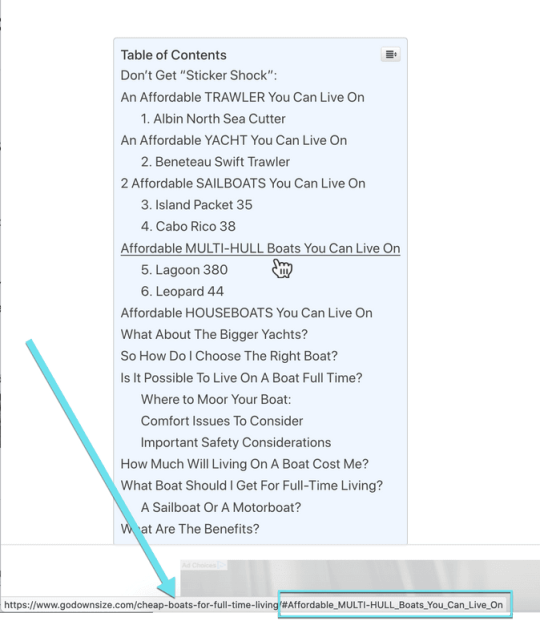
And here are the mini sitelinks they generate:

Featured snippets
As of January 2020, featured snippets were officially considered the #1 organic result (previously they were “position zero” — appearing before the top organic result).
It still remains a big question whether they get clicked more than “normal looking” search results, or whether they are comprehensive enough to get fewer clicks. However, recent research suggests they’re still important for SEO.

With that being said, featured snippets are not easy to predict, but if you choose to optimize for them, be sure to check my older Moz column that is still very valid: How to Optimize for Featured Snippets. Just don’t forget to monitor your clickthrough to ensure getting featured didn’t hurt.
Indented results
Showing intended results is a relatively new trend. So far it is not clear how exactly to get that type of search snippet, but you can track them in tools like STAT.
Complementing your product page with how-to content on the same topic may be a good idea (Google may decide to rank both as indented results). At least this is something to experiment with.
Monitoring and measuring
While rank monitoring is pretty straightforward, this kind of optimization is harder to monitor because your rankings remain the same. Here are two tools you can use:
1. Google Search Console
Google Search Console provides clear clickthrough data that can help you signal of positive or negative impact of your optimization efforts:
In the Performance tab, click in the date range filter (it usually defaults to three months), go to “Compare” tab and select “Compare last 3 months year over year”:
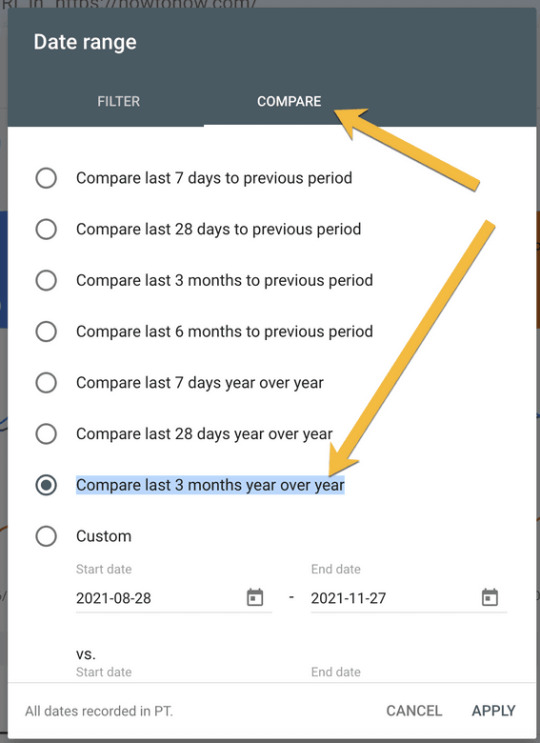
From there, you can click to “Pages” or “Queries” tab to identify pages or search queries that have lost organic traffic from the past year (especially if there was no substantial position change):
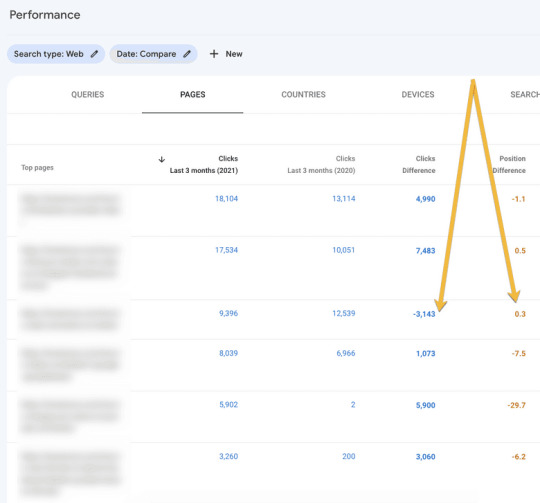
2. WebCEO
WebCEO provides a more convenient way to keep an eye on your keywords that are losing clicks. The tool has a separate tag and a notification system alerting you of any queries that see a decline in clicks:

3. Visualping
Another useful tool here is Visualping that you can set to monitor your exact search snippet to be alerted when it changes:
This is a great way to correlate your optimization with the actual change that happened (and then clickthrough change).
Using SiteChecker’s website monitoring tool you can also monitor your competitors’ pages and correlate their edits to an improved search snippet:
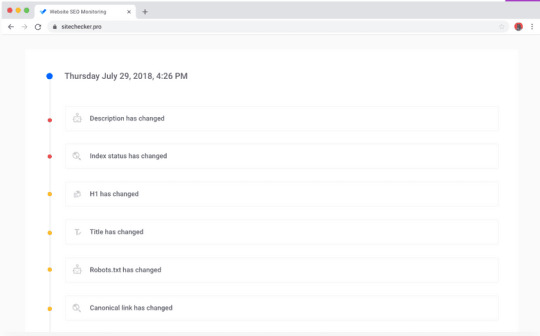
Conclusion
Whether it is good or bad news, organic traffic is no longer about rankings. In fact, you may well be ranking #1 (i.e. get featured) and notice a decrease in clickthrough once your page is promoted. But, you can experiment with all kinds of ways to improve your organic clickthrough without investing more into your rankings, even though organic CTR is much harder to predict these days.
0 notes
Text
How to Improve Organic Clickthrough for Your Content
Google search result pages are becoming more diverse and even interactive, which makes any clickthrough study out there much less reliable, because no two sets of search results are the same.
But how much control do writers and content creators have over how their content is represented in search? As it turns out, they do have quite a few options when it comes to optimizing their search snippets!
The anatomy of a standard search snippet
The standard Google search snippet has changed over the years, but in essence all the key elements are still there:
The clickable title or headline of the snippet (in blue)
The description of that page (about two lines long — it was lengthened for no particular reason a few years ago, but now seems to be back to two lines)
The URL path (used to be in green, now it is black)
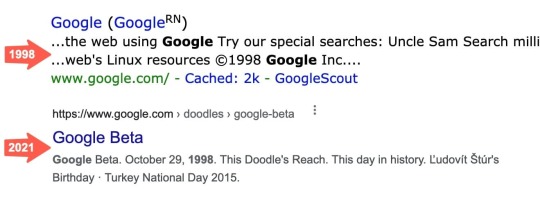
On a mobile device, there’s also a tiny logo next to the URL:
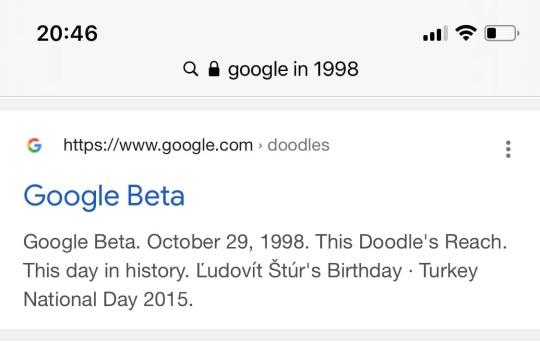
Here’s how much control you have over these standard elements of your search snippet (in the order they currently appear):
Logo
Google will use your site favicon when deciding which image to show next to your URL. This means that you have full control over this part of the search snippet.
URL path
These days, Google will do its best to show the meaningful URL path (almost like a breadcrumb) instead of simply the URL of the page. This consists of:
The domain: I don’t have any research to support this, but I personally always scan domain names when choosing what to click. That being said, your choice of a domain name may somewhat impact your clickthrough (if you do a particularly good job picking a snappy domain name that intrigues) and you do have full control over this part of the snippet. Tools like Namify specialize in finding exactly that type of domains that are short, memorable, and witty.
The breadcrumb or the truncated URL: You can use breadcrumb schema to force Google to use breadcrumb instead of the URL, and watch your Search Console to see if that helped clickthrough:

Title
Google used to rely on the page title to generate the title of the search snippet, but it has been rewriting that part more and more often recently.
That being said, it is still recommended to optimize your title to include keywords and entice more clicks — and hope Google will keep it intact.
Description
Google has been generating the search snippet description for years without using the associated meta description: recent studies show that Google ignores meta descriptions in about 70% of cases.
You may still want to create meta descriptions in case Google needs some clues, but expect them to figure this part out on their own.
Another way to try and trick Google into using your chosen snippet description is to create concise summaries of the content and add it at the beginning of the article. Using semantic analysis tools like Text Optimizer, you can also ensure these summaries are semantically relevant to the topic:

Now, let’s see how we can enhance that standard search snippet to let it stand out and attract more clicks.
Rich snippets for content-based pages
Rich snippets are search snippets enhanced with some additional details. Web publishers can control rich snippets by adding schema markup, so they are thus under website owners’ control.
Here are the types of rich snippets that will work for content-based pages:
FAQ page
Your page doesn’t have to be FAQ to qualify for this rich snippet. All you need to do is answer two or more subsequent questions somewhere on that page to use the code. There are several Wordpress plugins — including this one — that help you code that section.
HowTo schema
The HowTo schema was introduced for the DIY niche as a way to feature snippets that include step-by-step instructions.
These days, I see HowTo rich snippets implemented for just about any tutorial:
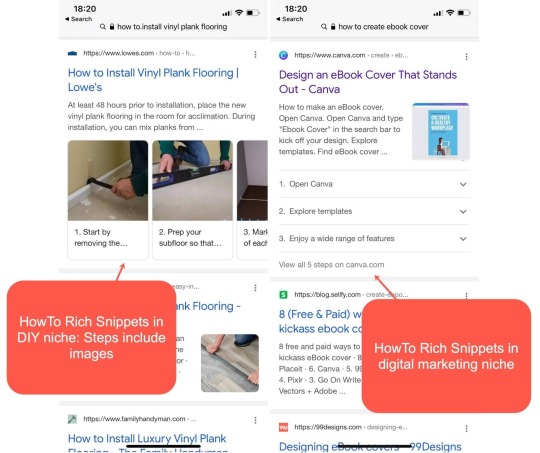
Video schema
More often than not, these rich snippets show up only on mobile devices, but they seem to be very common. A video rich snippet includes a video thumbnail:

Video schema will help you ensure the rich snippet is indeed generated, although I’ve seen dozens of cases when Google creates a rich snippet once you simply embed a video on the page, no schema required.
That being said, using the rich code won’t hurt, especially given there’s an easy video schema generator for you to create a code easily.
Structured snippets
Structured snippets are less popular than rich snippets, even though they are very common on search.
Structured snippets import tabular data to formulate a more informative search snippet:
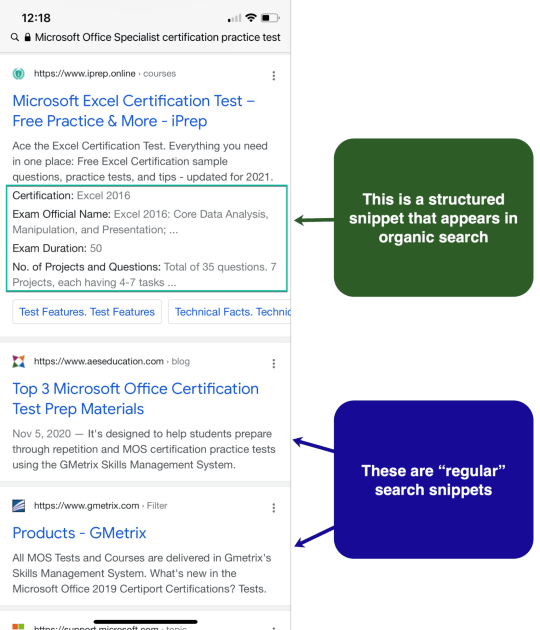
All it takes to qualify for this type of a snippet is to create an HTML table. It is a good idea to use tables for summaries, feature comparisons, lists, etc.
Image thumbnails
Image thumbnails are very rare on desktop. Yet on mobile devices, images show up inside most search snippets:
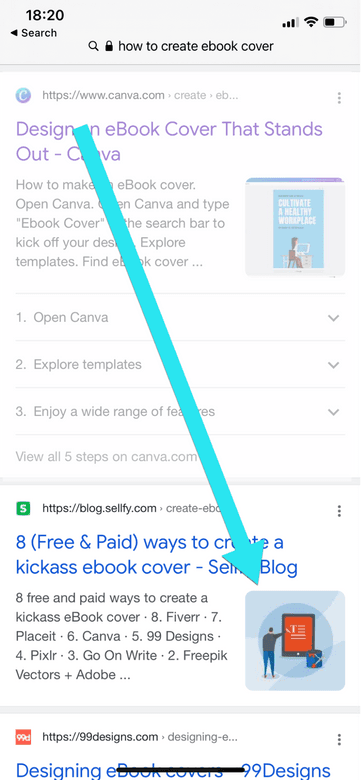
There’s no particular optimization tactic here, but there are best practices that may or may not help:
Obviously, make sure there’s at least one image on your landing page (make it featured on Wordpress).
Compress your image to make it load faster.
Specify the thumbnail using the meta tag.
Dates
Google shows dates within a search snippet when they think this may be useful to a searcher. Obviously, dates may have a big impact on clicking patterns: Based on the research by Ignite Visibility, about half of searchers claim that dates in search snippets are either “important” or “very important” clickthrough factors.
People may feel willing to click on a search snippet with a more recent date.
They can scroll past an older date even when the page ranks on top.

Google has clear guidelines as to how web publishers can keep those dates fresh:
Don’t try to hide dates, because they are useful.
When updating a piece, re-publish it on a new date only when you’ve basically rewritten it.(I.e., don’t redirect, better to update the old piece and change the publish date).
Include an “Updated on” note on top of the article if you updated it (Google will pick up on that date).
Using schema “datePublished” and “dateModified” is not required but will be helpful.
Google will understand all of the following date formats:
Published December 4, 2019
Posted Dec 4, 2020
Last updated: Dec 14, 2018
Updated Dec 14, 2021 8pm ET
Mini sitelinks
Mini sitelinks are probably the most unpredictable element of a search snippet. Google may randomly pick links from navigation, tag, or category links, etc. There’s also no way to tell Google they made a poor choice.
Unlike sitelinks, which usually show up for the top-ranking result and mostly for branded searches, mini sitelinks can be generated for just about any result out there.
Mini sitelinks represent a very useful feature, though, because they increase your odds that your search snippet will get a click (by adding more clickable links to your snippet).
One way to increase your chances that Google will show mini sitelinks within your search snippet is to use an on-page table of contents (which is powered by HTML anchor links).
Here’s an example of the table of contents:

And here are the mini sitelinks they generate:

Featured snippets
As of January 2020, featured snippets were officially considered the #1 organic result (previously they were “position zero” — appearing before the top organic result).
It still remains a big question whether they get clicked more than “normal looking” search results, or whether they are comprehensive enough to get fewer clicks. However, recent research suggests they’re still important for SEO.
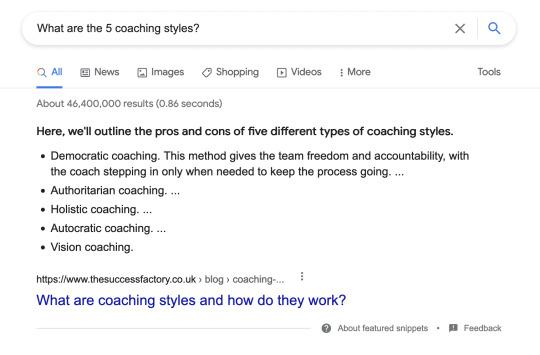
With that being said, featured snippets are not easy to predict, but if you choose to optimize for them, be sure to check my older Moz column that is still very valid: How to Optimize for Featured Snippets. Just don’t forget to monitor your clickthrough to ensure getting featured didn’t hurt.
Indented results
Showing intended results is a relatively new trend. So far it is not clear how exactly to get that type of search snippet, but you can track them in tools like STAT.
Complementing your product page with how-to content on the same topic may be a good idea (Google may decide to rank both as indented results). At least this is something to experiment with.
Monitoring and measuring
While rank monitoring is pretty straightforward, this kind of optimization is harder to monitor because your rankings remain the same. Here are two tools you can use:
1. Google Search Console
Google Search Console provides clear clickthrough data that can help you signal of positive or negative impact of your optimization efforts:
In the Performance tab, click in the date range filter (it usually defaults to three months), go to “Compare” tab and select “Compare last 3 months year over year”:
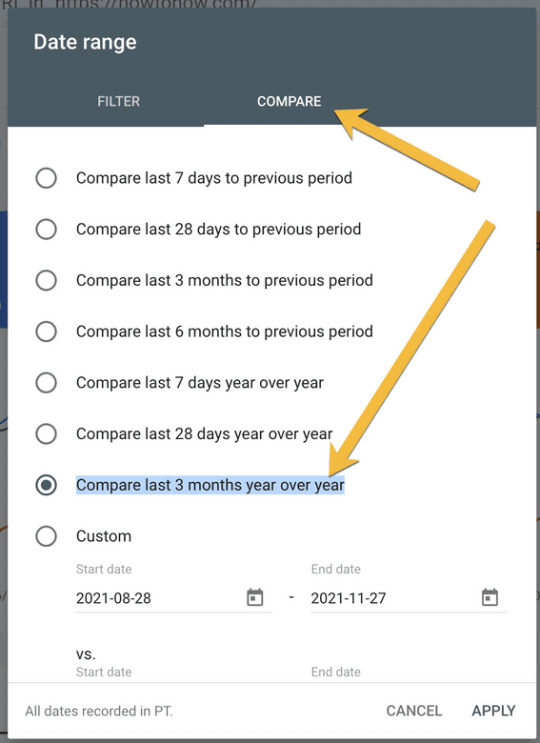
From there, you can click to “Pages” or “Queries” tab to identify pages or search queries that have lost organic traffic from the past year (especially if there was no substantial position change):
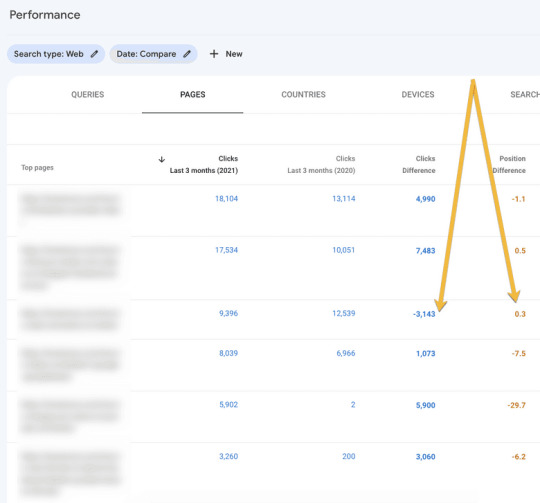
2. WebCEO
WebCEO provides a more convenient way to keep an eye on your keywords that are losing clicks. The tool has a separate tag and a notification system alerting you of any queries that see a decline in clicks:

3. Visualping
Another useful tool here is Visualping that you can set to monitor your exact search snippet to be alerted when it changes:
This is a great way to correlate your optimization with the actual change that happened (and then clickthrough change).
Using SiteChecker’s website monitoring tool you can also monitor your competitors’ pages and correlate their edits to an improved search snippet:
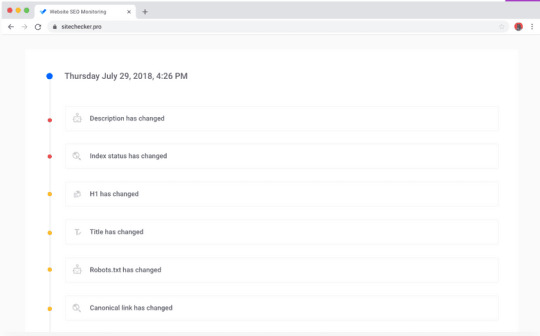
Conclusion
Whether it is good or bad news, organic traffic is no longer about rankings. In fact, you may well be ranking #1 (i.e. get featured) and notice a decrease in clickthrough once your page is promoted. But, you can experiment with all kinds of ways to improve your organic clickthrough without investing more into your rankings, even though organic CTR is much harder to predict these days.
0 notes
Text
How to Improve Organic Clickthrough for Your Content
Google search result pages are becoming more diverse and even interactive, which makes any clickthrough study out there much less reliable, because no two sets of search results are the same.
But how much control do writers and content creators have over how their content is represented in search? As it turns out, they do have quite a few options when it comes to optimizing their search snippets!
The anatomy of a standard search snippet
The standard Google search snippet has changed over the years, but in essence all the key elements are still there:
The clickable title or headline of the snippet (in blue)
The description of that page (about two lines long — it was lengthened for no particular reason a few years ago, but now seems to be back to two lines)
The URL path (used to be in green, now it is black)

On a mobile device, there’s also a tiny logo next to the URL:
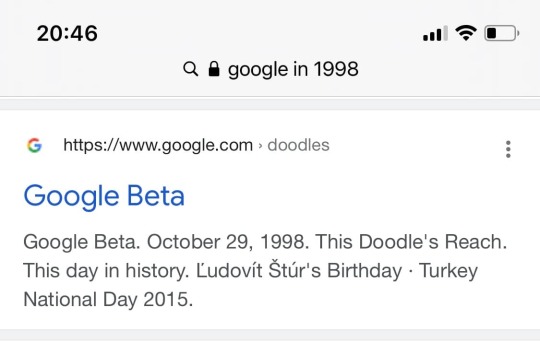
Here’s how much control you have over these standard elements of your search snippet (in the order they currently appear):
Logo
Google will use your site favicon when deciding which image to show next to your URL. This means that you have full control over this part of the search snippet.
URL path
These days, Google will do its best to show the meaningful URL path (almost like a breadcrumb) instead of simply the URL of the page. This consists of:
The domain: I don’t have any research to support this, but I personally always scan domain names when choosing what to click. That being said, your choice of a domain name may somewhat impact your clickthrough (if you do a particularly good job picking a snappy domain name that intrigues) and you do have full control over this part of the snippet. Tools like Namify specialize in finding exactly that type of domains that are short, memorable, and witty.
The breadcrumb or the truncated URL: You can use breadcrumb schema to force Google to use breadcrumb instead of the URL, and watch your Search Console to see if that helped clickthrough:
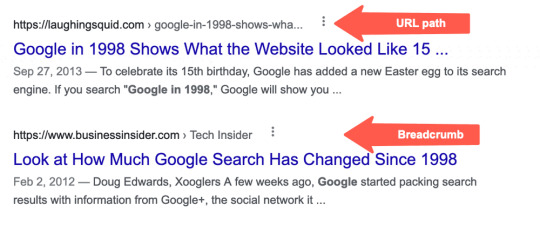
Title
Google used to rely on the page title to generate the title of the search snippet, but it has been rewriting that part more and more often recently.
That being said, it is still recommended to optimize your title to include keywords and entice more clicks — and hope Google will keep it intact.
Description
Google has been generating the search snippet description for years without using the associated meta description: recent studies show that Google ignores meta descriptions in about 70% of cases.
You may still want to create meta descriptions in case Google needs some clues, but expect them to figure this part out on their own.
Another way to try and trick Google into using your chosen snippet description is to create concise summaries of the content and add it at the beginning of the article. Using semantic analysis tools like Text Optimizer, you can also ensure these summaries are semantically relevant to the topic:

Now, let’s see how we can enhance that standard search snippet to let it stand out and attract more clicks.
Rich snippets for content-based pages
Rich snippets are search snippets enhanced with some additional details. Web publishers can control rich snippets by adding schema markup, so they are thus under website owners’ control.
Here are the types of rich snippets that will work for content-based pages:
FAQ page
Your page doesn’t have to be FAQ to qualify for this rich snippet. All you need to do is answer two or more subsequent questions somewhere on that page to use the code. There are several Wordpress plugins — including this one — that help you code that section.
HowTo schema
The HowTo schema was introduced for the DIY niche as a way to feature snippets that include step-by-step instructions.
These days, I see HowTo rich snippets implemented for just about any tutorial:
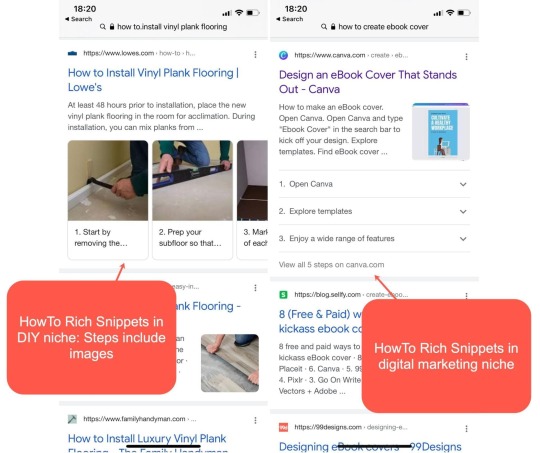
Video schema
More often than not, these rich snippets show up only on mobile devices, but they seem to be very common. A video rich snippet includes a video thumbnail:

Video schema will help you ensure the rich snippet is indeed generated, although I’ve seen dozens of cases when Google creates a rich snippet once you simply embed a video on the page, no schema required.
That being said, using the rich code won’t hurt, especially given there’s an easy video schema generator for you to create a code easily.
Structured snippets
Structured snippets are less popular than rich snippets, even though they are very common on search.
Structured snippets import tabular data to formulate a more informative search snippet:
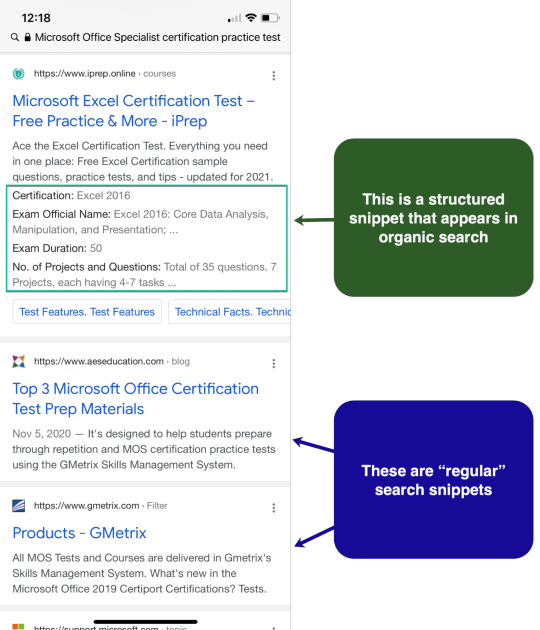
All it takes to qualify for this type of a snippet is to create an HTML table. It is a good idea to use tables for summaries, feature comparisons, lists, etc.
Image thumbnails
Image thumbnails are very rare on desktop. Yet on mobile devices, images show up inside most search snippets:

There’s no particular optimization tactic here, but there are best practices that may or may not help:
Obviously, make sure there’s at least one image on your landing page (make it featured on Wordpress).
Compress your image to make it load faster.
Specify the thumbnail using the meta tag.
Dates
Google shows dates within a search snippet when they think this may be useful to a searcher. Obviously, dates may have a big impact on clicking patterns: Based on the research by Ignite Visibility, about half of searchers claim that dates in search snippets are either “important” or “very important” clickthrough factors.
People may feel willing to click on a search snippet with a more recent date.
They can scroll past an older date even when the page ranks on top.
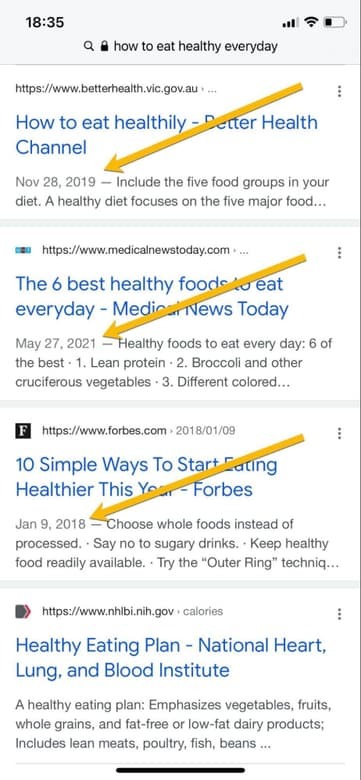
Google has clear guidelines as to how web publishers can keep those dates fresh:
Don’t try to hide dates, because they are useful.
When updating a piece, re-publish it on a new date only when you’ve basically rewritten it.(I.e., don’t redirect, better to update the old piece and change the publish date).
Include an “Updated on” note on top of the article if you updated it (Google will pick up on that date).
Using schema “datePublished” and “dateModified” is not required but will be helpful.
Google will understand all of the following date formats:
Published December 4, 2019
Posted Dec 4, 2020
Last updated: Dec 14, 2018
Updated Dec 14, 2021 8pm ET
Mini sitelinks
Mini sitelinks are probably the most unpredictable element of a search snippet. Google may randomly pick links from navigation, tag, or category links, etc. There’s also no way to tell Google they made a poor choice.
Unlike sitelinks, which usually show up for the top-ranking result and mostly for branded searches, mini sitelinks can be generated for just about any result out there.
Mini sitelinks represent a very useful feature, though, because they increase your odds that your search snippet will get a click (by adding more clickable links to your snippet).
One way to increase your chances that Google will show mini sitelinks within your search snippet is to use an on-page table of contents (which is powered by HTML anchor links).
Here’s an example of the table of contents:

And here are the mini sitelinks they generate:

Featured snippets
As of January 2020, featured snippets were officially considered the #1 organic result (previously they were “position zero” — appearing before the top organic result).
It still remains a big question whether they get clicked more than “normal looking” search results, or whether they are comprehensive enough to get fewer clicks. However, recent research suggests they’re still important for SEO.

With that being said, featured snippets are not easy to predict, but if you choose to optimize for them, be sure to check my older Moz column that is still very valid: How to Optimize for Featured Snippets. Just don’t forget to monitor your clickthrough to ensure getting featured didn’t hurt.
Indented results
Showing intended results is a relatively new trend. So far it is not clear how exactly to get that type of search snippet, but you can track them in tools like STAT.
Complementing your product page with how-to content on the same topic may be a good idea (Google may decide to rank both as indented results). At least this is something to experiment with.
Monitoring and measuring
While rank monitoring is pretty straightforward, this kind of optimization is harder to monitor because your rankings remain the same. Here are two tools you can use:
1. Google Search Console
Google Search Console provides clear clickthrough data that can help you signal of positive or negative impact of your optimization efforts:
In the Performance tab, click in the date range filter (it usually defaults to three months), go to “Compare” tab and select “Compare last 3 months year over year”:

From there, you can click to “Pages” or “Queries” tab to identify pages or search queries that have lost organic traffic from the past year (especially if there was no substantial position change):
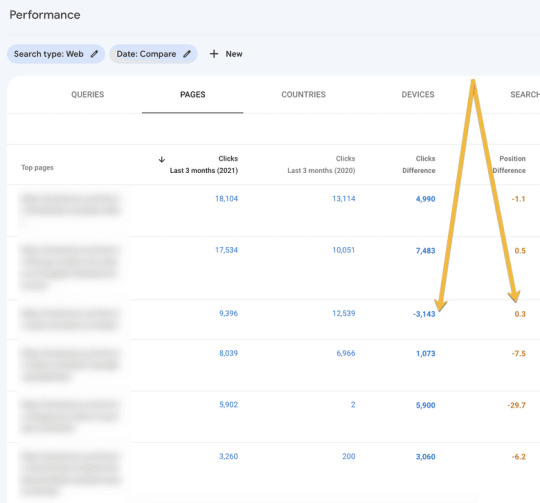
2. WebCEO
WebCEO provides a more convenient way to keep an eye on your keywords that are losing clicks. The tool has a separate tag and a notification system alerting you of any queries that see a decline in clicks:
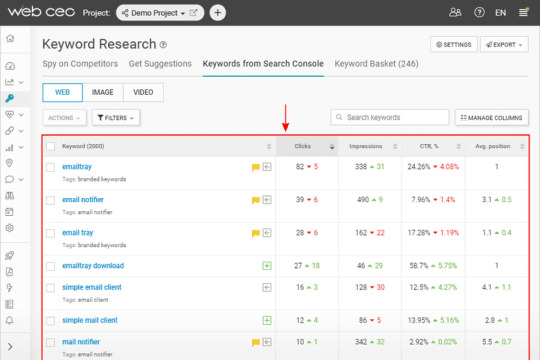
3. Visualping
Another useful tool here is Visualping that you can set to monitor your exact search snippet to be alerted when it changes:
This is a great way to correlate your optimization with the actual change that happened (and then clickthrough change).
Using SiteChecker’s website monitoring tool you can also monitor your competitors’ pages and correlate their edits to an improved search snippet:
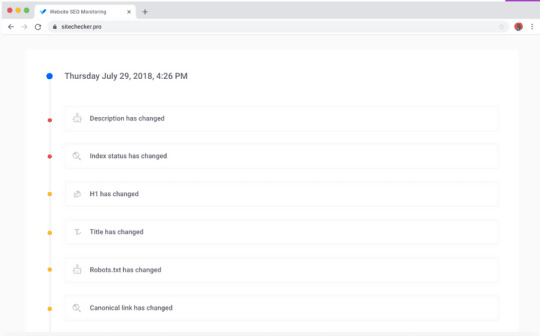
Conclusion
Whether it is good or bad news, organic traffic is no longer about rankings. In fact, you may well be ranking #1 (i.e. get featured) and notice a decrease in clickthrough once your page is promoted. But, you can experiment with all kinds of ways to improve your organic clickthrough without investing more into your rankings, even though organic CTR is much harder to predict these days.
0 notes
Text
How to Improve Organic Clickthrough for Your Content
Google search result pages are becoming more diverse and even interactive, which makes any clickthrough study out there much less reliable, because no two sets of search results are the same.
But how much control do writers and content creators have over how their content is represented in search? As it turns out, they do have quite a few options when it comes to optimizing their search snippets!
The anatomy of a standard search snippet
The standard Google search snippet has changed over the years, but in essence all the key elements are still there:
The clickable title or headline of the snippet (in blue)
The description of that page (about two lines long — it was lengthened for no particular reason a few years ago, but now seems to be back to two lines)
The URL path (used to be in green, now it is black)

On a mobile device, there’s also a tiny logo next to the URL:

Here’s how much control you have over these standard elements of your search snippet (in the order they currently appear):
Logo
Google will use your site favicon when deciding which image to show next to your URL. This means that you have full control over this part of the search snippet.
URL path
These days, Google will do its best to show the meaningful URL path (almost like a breadcrumb) instead of simply the URL of the page. This consists of:
The domain: I don’t have any research to support this, but I personally always scan domain names when choosing what to click. That being said, your choice of a domain name may somewhat impact your clickthrough (if you do a particularly good job picking a snappy domain name that intrigues) and you do have full control over this part of the snippet. Tools like Namify specialize in finding exactly that type of domains that are short, memorable, and witty.
The breadcrumb or the truncated URL: You can use breadcrumb schema to force Google to use breadcrumb instead of the URL, and watch your Search Console to see if that helped clickthrough:
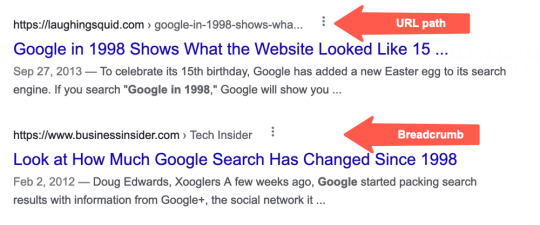
Title
Google used to rely on the page title to generate the title of the search snippet, but it has been rewriting that part more and more often recently.
That being said, it is still recommended to optimize your title to include keywords and entice more clicks — and hope Google will keep it intact.
Description
Google has been generating the search snippet description for years without using the associated meta description: recent studies show that Google ignores meta descriptions in about 70% of cases.
You may still want to create meta descriptions in case Google needs some clues, but expect them to figure this part out on their own.
Another way to try and trick Google into using your chosen snippet description is to create concise summaries of the content and add it at the beginning of the article. Using semantic analysis tools like Text Optimizer, you can also ensure these summaries are semantically relevant to the topic:

Now, let’s see how we can enhance that standard search snippet to let it stand out and attract more clicks.
Rich snippets for content-based pages
Rich snippets are search snippets enhanced with some additional details. Web publishers can control rich snippets by adding schema markup, so they are thus under website owners’ control.
Here are the types of rich snippets that will work for content-based pages:
FAQ page
Your page doesn’t have to be FAQ to qualify for this rich snippet. All you need to do is answer two or more subsequent questions somewhere on that page to use the code. There are several Wordpress plugins — including this one — that help you code that section.
HowTo schema
The HowTo schema was introduced for the DIY niche as a way to feature snippets that include step-by-step instructions.
These days, I see HowTo rich snippets implemented for just about any tutorial:

Video schema
More often than not, these rich snippets show up only on mobile devices, but they seem to be very common. A video rich snippet includes a video thumbnail:

Video schema will help you ensure the rich snippet is indeed generated, although I’ve seen dozens of cases when Google creates a rich snippet once you simply embed a video on the page, no schema required.
That being said, using the rich code won’t hurt, especially given there’s an easy video schema generator for you to create a code easily.
Structured snippets
Structured snippets are less popular than rich snippets, even though they are very common on search.
Structured snippets import tabular data to formulate a more informative search snippet:
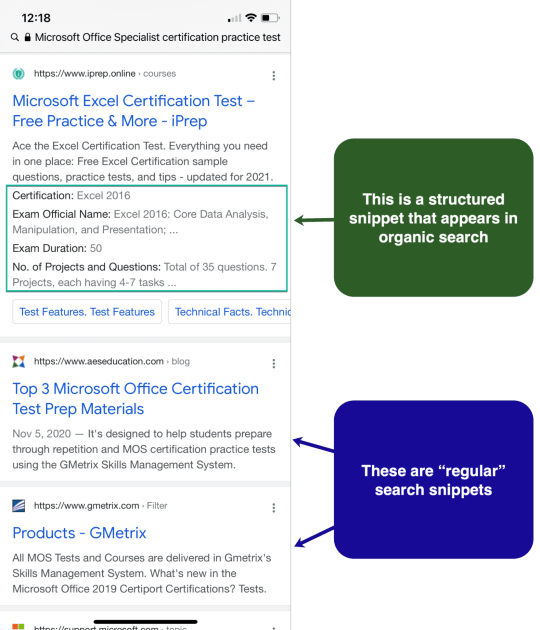
All it takes to qualify for this type of a snippet is to create an HTML table. It is a good idea to use tables for summaries, feature comparisons, lists, etc.
Image thumbnails
Image thumbnails are very rare on desktop. Yet on mobile devices, images show up inside most search snippets:
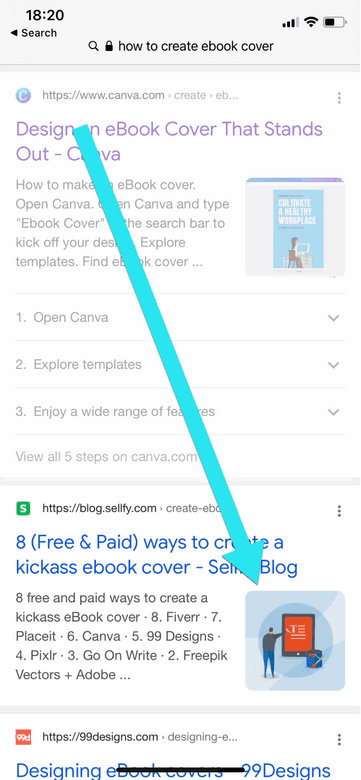
There’s no particular optimization tactic here, but there are best practices that may or may not help:
Obviously, make sure there’s at least one image on your landing page (make it featured on Wordpress).
Compress your image to make it load faster.
Specify the thumbnail using the meta tag.
Dates
Google shows dates within a search snippet when they think this may be useful to a searcher. Obviously, dates may have a big impact on clicking patterns: Based on the research by Ignite Visibility, about half of searchers claim that dates in search snippets are either “important” or “very important” clickthrough factors.
People may feel willing to click on a search snippet with a more recent date.
They can scroll past an older date even when the page ranks on top.

Google has clear guidelines as to how web publishers can keep those dates fresh:
Don’t try to hide dates, because they are useful.
When updating a piece, re-publish it on a new date only when you’ve basically rewritten it.(I.e., don’t redirect, better to update the old piece and change the publish date).
Include an “Updated on” note on top of the article if you updated it (Google will pick up on that date).
Using schema “datePublished” and “dateModified” is not required but will be helpful.
Google will understand all of the following date formats:
Published December 4, 2019
Posted Dec 4, 2020
Last updated: Dec 14, 2018
Updated Dec 14, 2021 8pm ET
Mini sitelinks
Mini sitelinks are probably the most unpredictable element of a search snippet. Google may randomly pick links from navigation, tag, or category links, etc. There’s also no way to tell Google they made a poor choice.
Unlike sitelinks, which usually show up for the top-ranking result and mostly for branded searches, mini sitelinks can be generated for just about any result out there.
Mini sitelinks represent a very useful feature, though, because they increase your odds that your search snippet will get a click (by adding more clickable links to your snippet).
One way to increase your chances that Google will show mini sitelinks within your search snippet is to use an on-page table of contents (which is powered by HTML anchor links).
Here’s an example of the table of contents:
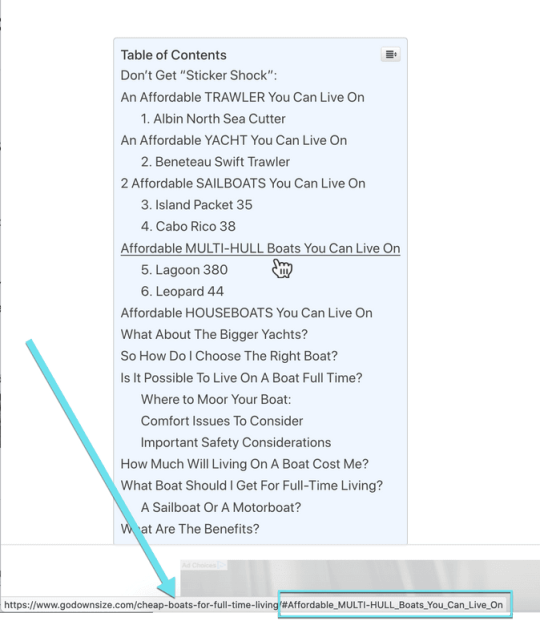
And here are the mini sitelinks they generate:

Featured snippets
As of January 2020, featured snippets were officially considered the #1 organic result (previously they were “position zero” — appearing before the top organic result).
It still remains a big question whether they get clicked more than “normal looking” search results, or whether they are comprehensive enough to get fewer clicks. However, recent research suggests they’re still important for SEO.
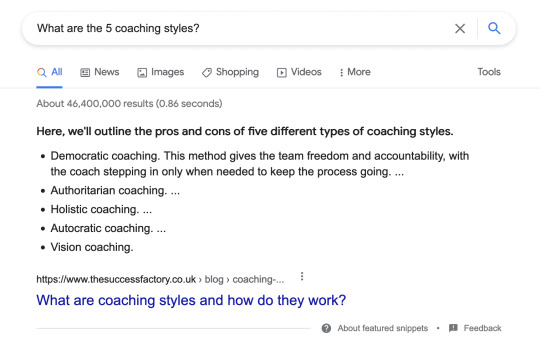
With that being said, featured snippets are not easy to predict, but if you choose to optimize for them, be sure to check my older Moz column that is still very valid: How to Optimize for Featured Snippets. Just don’t forget to monitor your clickthrough to ensure getting featured didn’t hurt.
Indented results
Showing intended results is a relatively new trend. So far it is not clear how exactly to get that type of search snippet, but you can track them in tools like STAT.
Complementing your product page with how-to content on the same topic may be a good idea (Google may decide to rank both as indented results). At least this is something to experiment with.
Monitoring and measuring
While rank monitoring is pretty straightforward, this kind of optimization is harder to monitor because your rankings remain the same. Here are two tools you can use:
1. Google Search Console
Google Search Console provides clear clickthrough data that can help you signal of positive or negative impact of your optimization efforts:
In the Performance tab, click in the date range filter (it usually defaults to three months), go to “Compare” tab and select “Compare last 3 months year over year”:
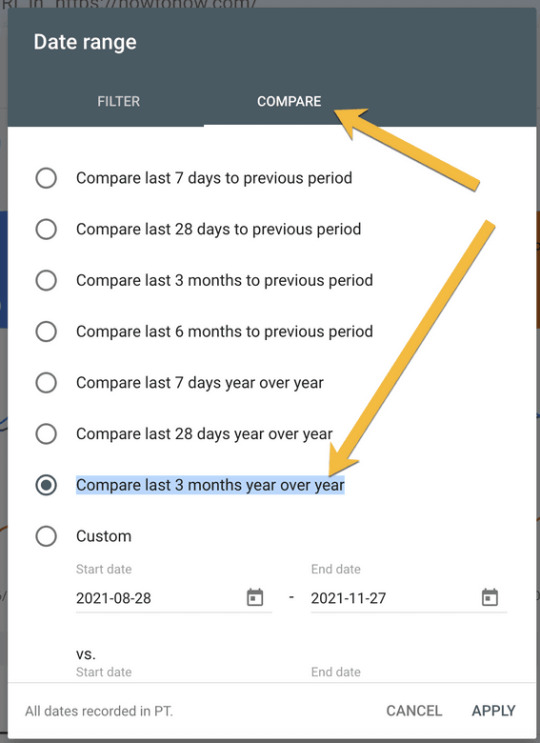
From there, you can click to “Pages” or “Queries” tab to identify pages or search queries that have lost organic traffic from the past year (especially if there was no substantial position change):

2. WebCEO
WebCEO provides a more convenient way to keep an eye on your keywords that are losing clicks. The tool has a separate tag and a notification system alerting you of any queries that see a decline in clicks:
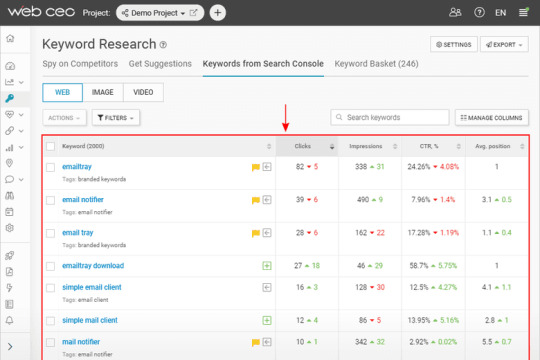
3. Visualping
Another useful tool here is Visualping that you can set to monitor your exact search snippet to be alerted when it changes:
This is a great way to correlate your optimization with the actual change that happened (and then clickthrough change).
Using SiteChecker’s website monitoring tool you can also monitor your competitors’ pages and correlate their edits to an improved search snippet:
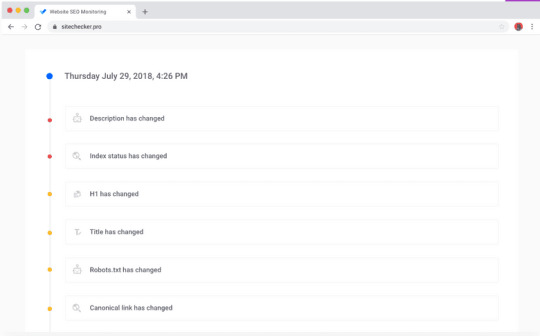
Conclusion
Whether it is good or bad news, organic traffic is no longer about rankings. In fact, you may well be ranking #1 (i.e. get featured) and notice a decrease in clickthrough once your page is promoted. But, you can experiment with all kinds of ways to improve your organic clickthrough without investing more into your rankings, even though organic CTR is much harder to predict these days.
0 notes
Text
How to Improve Organic Clickthrough for Your Content
Google search result pages are becoming more diverse and even interactive, which makes any clickthrough study out there much less reliable, because no two sets of search results are the same.
But how much control do writers and content creators have over how their content is represented in search? As it turns out, they do have quite a few options when it comes to optimizing their search snippets!
The anatomy of a standard search snippet
The standard Google search snippet has changed over the years, but in essence all the key elements are still there:
The clickable title or headline of the snippet (in blue)
The description of that page (about two lines long — it was lengthened for no particular reason a few years ago, but now seems to be back to two lines)
The URL path (used to be in green, now it is black)
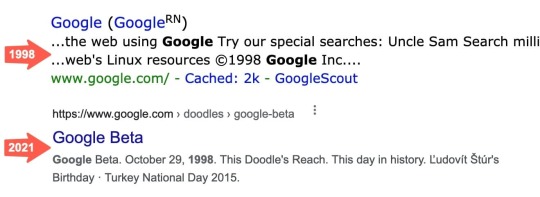
On a mobile device, there’s also a tiny logo next to the URL:
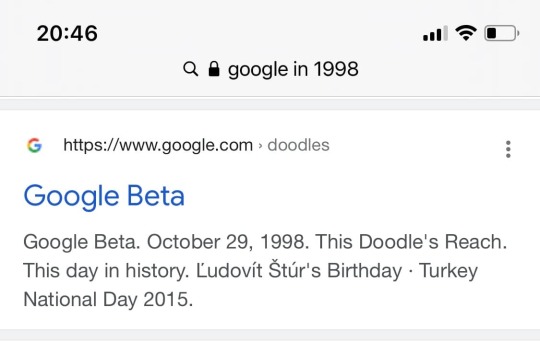
Here’s how much control you have over these standard elements of your search snippet (in the order they currently appear):
Logo
Google will use your site favicon when deciding which image to show next to your URL. This means that you have full control over this part of the search snippet.
URL path
These days, Google will do its best to show the meaningful URL path (almost like a breadcrumb) instead of simply the URL of the page. This consists of:
The domain: I don’t have any research to support this, but I personally always scan domain names when choosing what to click. That being said, your choice of a domain name may somewhat impact your clickthrough (if you do a particularly good job picking a snappy domain name that intrigues) and you do have full control over this part of the snippet. Tools like Namify specialize in finding exactly that type of domains that are short, memorable, and witty.
The breadcrumb or the truncated URL: You can use breadcrumb schema to force Google to use breadcrumb instead of the URL, and watch your Search Console to see if that helped clickthrough:
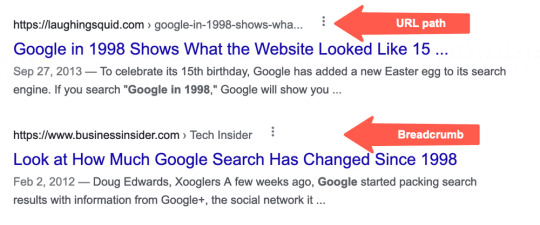
Title
Google used to rely on the page title to generate the title of the search snippet, but it has been rewriting that part more and more often recently.
That being said, it is still recommended to optimize your title to include keywords and entice more clicks — and hope Google will keep it intact.
Description
Google has been generating the search snippet description for years without using the associated meta description: recent studies show that Google ignores meta descriptions in about 70% of cases.
You may still want to create meta descriptions in case Google needs some clues, but expect them to figure this part out on their own.
Another way to try and trick Google into using your chosen snippet description is to create concise summaries of the content and add it at the beginning of the article. Using semantic analysis tools like Text Optimizer, you can also ensure these summaries are semantically relevant to the topic:

Now, let’s see how we can enhance that standard search snippet to let it stand out and attract more clicks.
Rich snippets for content-based pages
Rich snippets are search snippets enhanced with some additional details. Web publishers can control rich snippets by adding schema markup, so they are thus under website owners’ control.
Here are the types of rich snippets that will work for content-based pages:
FAQ page
Your page doesn’t have to be FAQ to qualify for this rich snippet. All you need to do is answer two or more subsequent questions somewhere on that page to use the code. There are several Wordpress plugins — including this one — that help you code that section.
HowTo schema
The HowTo schema was introduced for the DIY niche as a way to feature snippets that include step-by-step instructions.
These days, I see HowTo rich snippets implemented for just about any tutorial:

Video schema
More often than not, these rich snippets show up only on mobile devices, but they seem to be very common. A video rich snippet includes a video thumbnail:

Video schema will help you ensure the rich snippet is indeed generated, although I’ve seen dozens of cases when Google creates a rich snippet once you simply embed a video on the page, no schema required.
That being said, using the rich code won’t hurt, especially given there’s an easy video schema generator for you to create a code easily.
Structured snippets
Structured snippets are less popular than rich snippets, even though they are very common on search.
Structured snippets import tabular data to formulate a more informative search snippet:

All it takes to qualify for this type of a snippet is to create an HTML table. It is a good idea to use tables for summaries, feature comparisons, lists, etc.
Image thumbnails
Image thumbnails are very rare on desktop. Yet on mobile devices, images show up inside most search snippets:

There’s no particular optimization tactic here, but there are best practices that may or may not help:
Obviously, make sure there’s at least one image on your landing page (make it featured on Wordpress).
Compress your image to make it load faster.
Specify the thumbnail using the meta tag.
Dates
Google shows dates within a search snippet when they think this may be useful to a searcher. Obviously, dates may have a big impact on clicking patterns: Based on the research by Ignite Visibility, about half of searchers claim that dates in search snippets are either “important” or “very important” clickthrough factors.
People may feel willing to click on a search snippet with a more recent date.
They can scroll past an older date even when the page ranks on top.

Google has clear guidelines as to how web publishers can keep those dates fresh:
Don’t try to hide dates, because they are useful.
When updating a piece, re-publish it on a new date only when you’ve basically rewritten it.(I.e., don’t redirect, better to update the old piece and change the publish date).
Include an “Updated on” note on top of the article if you updated it (Google will pick up on that date).
Using schema “datePublished” and “dateModified” is not required but will be helpful.
Google will understand all of the following date formats:
Published December 4, 2019
Posted Dec 4, 2020
Last updated: Dec 14, 2018
Updated Dec 14, 2021 8pm ET
Mini sitelinks
Mini sitelinks are probably the most unpredictable element of a search snippet. Google may randomly pick links from navigation, tag, or category links, etc. There’s also no way to tell Google they made a poor choice.
Unlike sitelinks, which usually show up for the top-ranking result and mostly for branded searches, mini sitelinks can be generated for just about any result out there.
Mini sitelinks represent a very useful feature, though, because they increase your odds that your search snippet will get a click (by adding more clickable links to your snippet).
One way to increase your chances that Google will show mini sitelinks within your search snippet is to use an on-page table of contents (which is powered by HTML anchor links).
Here’s an example of the table of contents:

And here are the mini sitelinks they generate:

Featured snippets
As of January 2020, featured snippets were officially considered the #1 organic result (previously they were “position zero” — appearing before the top organic result).
It still remains a big question whether they get clicked more than “normal looking” search results, or whether they are comprehensive enough to get fewer clicks. However, recent research suggests they’re still important for SEO.
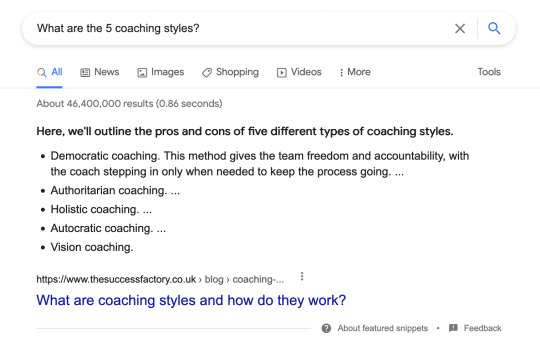
With that being said, featured snippets are not easy to predict, but if you choose to optimize for them, be sure to check my older Moz column that is still very valid: How to Optimize for Featured Snippets. Just don’t forget to monitor your clickthrough to ensure getting featured didn’t hurt.
Indented results
Showing intended results is a relatively new trend. So far it is not clear how exactly to get that type of search snippet, but you can track them in tools like STAT.
Complementing your product page with how-to content on the same topic may be a good idea (Google may decide to rank both as indented results). At least this is something to experiment with.
Monitoring and measuring
While rank monitoring is pretty straightforward, this kind of optimization is harder to monitor because your rankings remain the same. Here are two tools you can use:
1. Google Search Console
Google Search Console provides clear clickthrough data that can help you signal of positive or negative impact of your optimization efforts:
In the Performance tab, click in the date range filter (it usually defaults to three months), go to “Compare” tab and select “Compare last 3 months year over year”:

From there, you can click to “Pages” or “Queries” tab to identify pages or search queries that have lost organic traffic from the past year (especially if there was no substantial position change):

2. WebCEO
WebCEO provides a more convenient way to keep an eye on your keywords that are losing clicks. The tool has a separate tag and a notification system alerting you of any queries that see a decline in clicks:

3. Visualping
Another useful tool here is Visualping that you can set to monitor your exact search snippet to be alerted when it changes:
This is a great way to correlate your optimization with the actual change that happened (and then clickthrough change).
Using SiteChecker’s website monitoring tool you can also monitor your competitors’ pages and correlate their edits to an improved search snippet:

Conclusion
Whether it is good or bad news, organic traffic is no longer about rankings. In fact, you may well be ranking #1 (i.e. get featured) and notice a decrease in clickthrough once your page is promoted. But, you can experiment with all kinds of ways to improve your organic clickthrough without investing more into your rankings, even though organic CTR is much harder to predict these days.
https://ift.tt/3timvFM
0 notes
Text
Zero Cost, Maximum Impact: 17 Free AI Tools to Launch and Grow Your Business
Who said AI has to be expensive? 💸 Discover 17 incredible free AI tools that can take your business to new heights without costing you a dime. 📈 Don’t miss out on these game-changing resources!
AI Tools to Launch and Grow Your Business:
Brand Name Generator AI:
Namify AI Tool:
Discover a remarkable brand name using this innovative brand name generator powered by artificial intelligence. Utilizing artificial intelligence, this brand name generator offers you exclusive and appropriate names for your brand.

Design:
Canva AI Tool:
Canva, established in 2013, is an online platform dedicated to design and visual communication, aiming to enable individuals worldwide to create and share various designs.

Bio Links:
Linklab AI Tool:
Linklab can easily transform your regular link-in-bio, such as linktr.ee/johndoe123, into a personalized branded link like www.JohnDoe.online within seconds. Additionally, Linklab automatically redirects your branded link to your current link-in-bio page. Simply provide your existing link-in-bio, select a branded link, and you’re good to go! Moreover, you will also receive two complimentary email IDs (e.g., [email protected]) to enhance your professional image. Take advantage of our special launch offer and enjoy Linklab free of charge for the first 6 months of the initial year, with no commitment required.
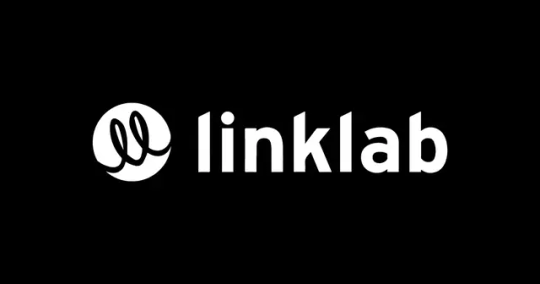
Meeting Notes:
TLDV AI Tool:
The tl;dv tool enables you to extract value from meetings held throughout the organization. It allows you to record, transcribe, summarize, generate, and automate meeting insights that are beneficial for both you and your organization. The setup process takes only a few minutes.

Animation:
Animaker AI Tool:
Animaker Inc. is a software for creating do-it-yourself video animations. Launched in 2014, this cloud-based software enables users to produce animated videos by utilizing pre-designed characters and templates. Notably, in 2017, Animaker made history by being the pioneer in introducing an animated vertical video creator.
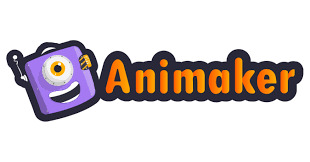
Logo:
looka AI Tool:
Forget looking generic! Looka’s software is powered by AI to create a logo that matches your vision — no design skills required. Generate endless options, and tweak designs to get exactly what you want. With your logo design finalized, it’s time to start building your brand identity. Looka’s Brand Kit uses your logo, colors, and fonts to instantly create hundreds of branded marketing materials—all in one spot.

AI Chat:
Perplexity AI Tool:
Perplexity AI, a research and conversational search engine powered by AI chatbot technology, utilizes natural language predictive text to provide answers to queries. It was introduced in 2022 and generates responses by drawing information from various online sources, including citing relevant links within the text.

Automation:
Zapier AI Tool:
Zapier offers workflows that enable the integration of various web applications within a single workflow. Their solutions are designed to streamline repetitive tasks, like lead management. By establishing “rules,” users can configure the seamless transfer of data across different tools and services.

Schedule:
Calendly AI Tool:
Calendly, a software company, creates a business communication platform for teams to organize, plan, and review external meetings. Founded by Nigerian entrepreneur Tope Awotona in Atlanta, Georgia, the company closed its physical offices in July 2021.

Management:
Notion AI Tool:
Notion, created by Notion Labs, Inc., is a freemium web application designed for productivity and note-taking. It provides users with a range of organizational features such as task management, project tracking, to-do lists, and bookmarking.

Website:
10web AI Tool:
Build a website utilizing an AI Website Builder, host it on 10Web Hosting, and enhance its performance with PageSpeed Booster. Design your website effortlessly using AI-generated content and images.

App Design:
Uizard AI Tool:
Uizard enables product teams to work together seamlessly and accelerate the realization of their ideas, eliminating the issues of missed deadlines and design bottlenecks that were once prevalent. By leveraging the capabilities of AI, teams can generate concepts from text prompts and refine existing designs through the use of basic screenshots.

Video Edit:
Descript AI Tool:
Descript introduces a revolutionary video editing platform that is as user-friendly as a document. With the help of AI technology and a user-friendly interface, Descript is empowering YouTube and TikTok creators, leading podcasts, and businesses utilizing video for various purposes such as marketing, sales, internal training, and collaboration. The ultimate goal of Descript is to establish video editing as an essential tool for all communicators, alongside documents and presentations.
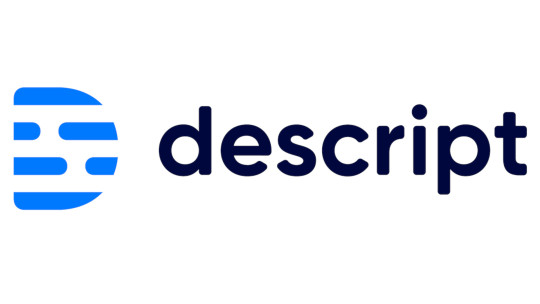
AI Voice Generator:
Elevenlabs AI Tool:
Utilize our AI voice generator to transform text into speech online at no cost. Instantly generate natural AI voices in various languages, ideal for video creators, developers, and businesses.

Copywriting:
Copy AI Tool:
Busywork is detrimental to the efficiency of your go-to-market team and is negatively impacting your financial performance. Our GTM AI Platform streamlines your sales and marketing operations by generating content, conducting large-scale prospecting, enhancing CRM data, and providing additional functionalities. Experience instant improvements and safeguard the effectiveness of your GTM strategy for the long term.

Presentation:
Tome:
Tome is the leading AI-native research and presentation platform for sales and marketing teams.

Landing Page’s:
Unbounce AI Tool:
Over 15,000 marketers utilize our platform to enhance their landing page creation process and increase customer conversions. Unbounce proves to be an excellent tool for marketers in various industries and teams of any magnitude, including individual marketers. However, there are certain groups who particularly admire Unbounce.
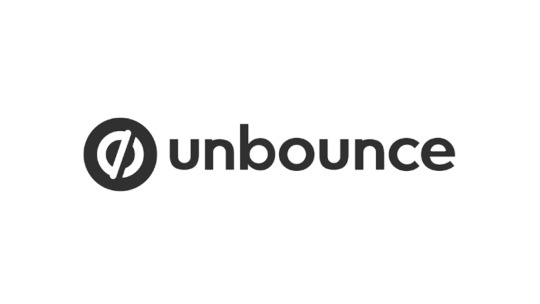
Conclusion:
In conclusion, the text highlights the availability of 17 free AI tools that can be utilized to start and expand a business without incurring any costs. These tools offer a way to leverage artificial intelligence for business growth without the need for a significant financial investment.
#AIadvantage#AIforBusiness#AIforEntrepreneurs#AIforStartups#AIgrowth#AIinnovation#AItechnology#AItools#artificialintelligence#BusinessDevelopment#BusinessGrowth#BusinessLaunch#BusinessStrategy#BusinessSuccess#Entrepreneurship#FreeAItools#FreeTools#GrowYourBusiness#MaximizeImpact#ZeroCostAI
1 note
·
View note
Text
How to Improve Organic Clickthrough for Your Content
Google search result pages are becoming more diverse and even interactive, which makes any clickthrough study out there much less reliable, because no two sets of search results are the same.
But how much control do writers and content creators have over how their content is represented in search? As it turns out, they do have quite a few options when it comes to optimizing their search snippets!
The anatomy of a standard search snippet
The standard Google search snippet has changed over the years, but in essence all the key elements are still there:
The clickable title or headline of the snippet (in blue)
The description of that page (about two lines long — it was lengthened for no particular reason a few years ago, but now seems to be back to two lines)
The URL path (used to be in green, now it is black)

On a mobile device, there’s also a tiny logo next to the URL:

Here’s how much control you have over these standard elements of your search snippet (in the order they currently appear):
Logo
Google will use your site favicon when deciding which image to show next to your URL. This means that you have full control over this part of the search snippet.
URL path
These days, Google will do its best to show the meaningful URL path (almost like a breadcrumb) instead of simply the URL of the page. This consists of:
The domain: I don’t have any research to support this, but I personally always scan domain names when choosing what to click. That being said, your choice of a domain name may somewhat impact your clickthrough (if you do a particularly good job picking a snappy domain name that intrigues) and you do have full control over this part of the snippet. Tools like Namify specialize in finding exactly that type of domains that are short, memorable, and witty.
The breadcrumb or the truncated URL: You can use breadcrumb schema to force Google to use breadcrumb instead of the URL, and watch your Search Console to see if that helped clickthrough:
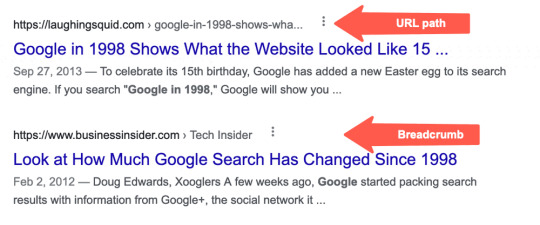
Title
Google used to rely on the page title to generate the title of the search snippet, but it has been rewriting that part more and more often recently.
That being said, it is still recommended to optimize your title to include keywords and entice more clicks — and hope Google will keep it intact.
Description
Google has been generating the search snippet description for years without using the associated meta description: recent studies show that Google ignores meta descriptions in about 70% of cases.
You may still want to create meta descriptions in case Google needs some clues, but expect them to figure this part out on their own.
Another way to try and trick Google into using your chosen snippet description is to create concise summaries of the content and add it at the beginning of the article. Using semantic analysis tools like Text Optimizer, you can also ensure these summaries are semantically relevant to the topic:

Now, let’s see how we can enhance that standard search snippet to let it stand out and attract more clicks.
Rich snippets for content-based pages
Rich snippets are search snippets enhanced with some additional details. Web publishers can control rich snippets by adding schema markup, so they are thus under website owners’ control.
Here are the types of rich snippets that will work for content-based pages:
FAQ page
Your page doesn’t have to be FAQ to qualify for this rich snippet. All you need to do is answer two or more subsequent questions somewhere on that page to use the code. There are several Wordpress plugins — including this one — that help you code that section.
HowTo schema
The HowTo schema was introduced for the DIY niche as a way to feature snippets that include step-by-step instructions.
These days, I see HowTo rich snippets implemented for just about any tutorial:

Video schema
More often than not, these rich snippets show up only on mobile devices, but they seem to be very common. A video rich snippet includes a video thumbnail:
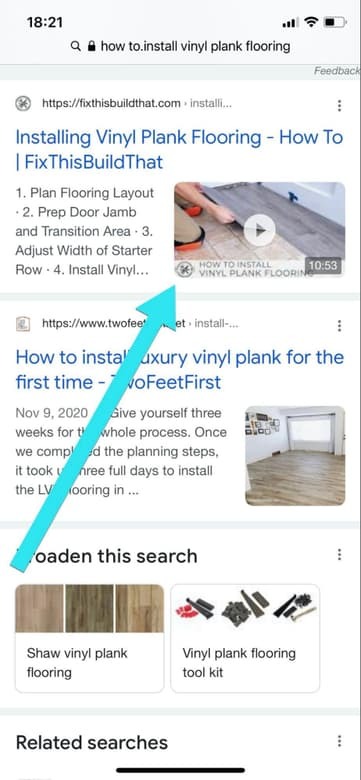
Video schema will help you ensure the rich snippet is indeed generated, although I’ve seen dozens of cases when Google creates a rich snippet once you simply embed a video on the page, no schema required.
That being said, using the rich code won’t hurt, especially given there’s an easy video schema generator for you to create a code easily.
Structured snippets
Structured snippets are less popular than rich snippets, even though they are very common on search.
Structured snippets import tabular data to formulate a more informative search snippet:

All it takes to qualify for this type of a snippet is to create an HTML table. It is a good idea to use tables for summaries, feature comparisons, lists, etc.
Image thumbnails
Image thumbnails are very rare on desktop. Yet on mobile devices, images show up inside most search snippets:

There’s no particular optimization tactic here, but there are best practices that may or may not help:
Obviously, make sure there’s at least one image on your landing page (make it featured on Wordpress).
Compress your image to make it load faster.
Specify the thumbnail using the meta tag.
Dates
Google shows dates within a search snippet when they think this may be useful to a searcher. Obviously, dates may have a big impact on clicking patterns: Based on the research by Ignite Visibility, about half of searchers claim that dates in search snippets are either “important” or “very important” clickthrough factors.
People may feel willing to click on a search snippet with a more recent date.
They can scroll past an older date even when the page ranks on top.

Google has clear guidelines as to how web publishers can keep those dates fresh:
Don’t try to hide dates, because they are useful.
When updating a piece, re-publish it on a new date only when you’ve basically rewritten it.(I.e., don’t redirect, better to update the old piece and change the publish date).
Include an “Updated on” note on top of the article if you updated it (Google will pick up on that date).
Using schema “datePublished” and “dateModified” is not required but will be helpful.
Google will understand all of the following date formats:
Published December 4, 2019
Posted Dec 4, 2020
Last updated: Dec 14, 2018
Updated Dec 14, 2021 8pm ET
Mini sitelinks
Mini sitelinks are probably the most unpredictable element of a search snippet. Google may randomly pick links from navigation, tag, or category links, etc. There’s also no way to tell Google they made a poor choice.
Unlike sitelinks, which usually show up for the top-ranking result and mostly for branded searches, mini sitelinks can be generated for just about any result out there.
Mini sitelinks represent a very useful feature, though, because they increase your odds that your search snippet will get a click (by adding more clickable links to your snippet).
One way to increase your chances that Google will show mini sitelinks within your search snippet is to use an on-page table of contents (which is powered by HTML anchor links).
Here’s an example of the table of contents:

And here are the mini sitelinks they generate:

Featured snippets
As of January 2020, featured snippets were officially considered the #1 organic result (previously they were “position zero” — appearing before the top organic result).
It still remains a big question whether they get clicked more than “normal looking” search results, or whether they are comprehensive enough to get fewer clicks. However, recent research suggests they’re still important for SEO.
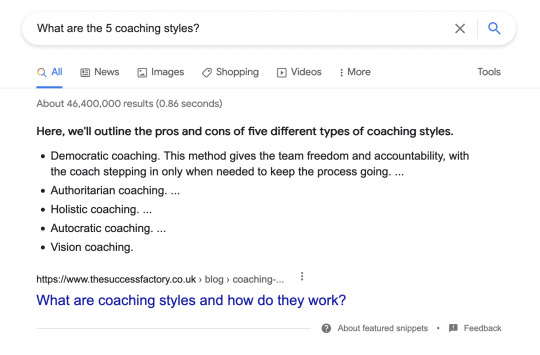
With that being said, featured snippets are not easy to predict, but if you choose to optimize for them, be sure to check my older Moz column that is still very valid: How to Optimize for Featured Snippets. Just don’t forget to monitor your clickthrough to ensure getting featured didn’t hurt.
Indented results
Showing intended results is a relatively new trend. So far it is not clear how exactly to get that type of search snippet, but you can track them in tools like STAT.
Complementing your product page with how-to content on the same topic may be a good idea (Google may decide to rank both as indented results). At least this is something to experiment with.
Monitoring and measuring
While rank monitoring is pretty straightforward, this kind of optimization is harder to monitor because your rankings remain the same. Here are two tools you can use:
1. Google Search Console
Google Search Console provides clear clickthrough data that can help you signal of positive or negative impact of your optimization efforts:
In the Performance tab, click in the date range filter (it usually defaults to three months), go to “Compare” tab and select “Compare last 3 months year over year”:

From there, you can click to “Pages” or “Queries” tab to identify pages or search queries that have lost organic traffic from the past year (especially if there was no substantial position change):
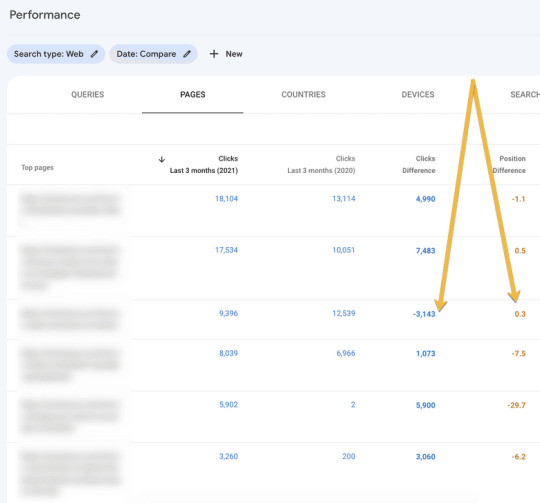
2. WebCEO
WebCEO provides a more convenient way to keep an eye on your keywords that are losing clicks. The tool has a separate tag and a notification system alerting you of any queries that see a decline in clicks:

3. Visualping
Another useful tool here is Visualping that you can set to monitor your exact search snippet to be alerted when it changes:
This is a great way to correlate your optimization with the actual change that happened (and then clickthrough change).
Using SiteChecker’s website monitoring tool you can also monitor your competitors’ pages and correlate their edits to an improved search snippet:
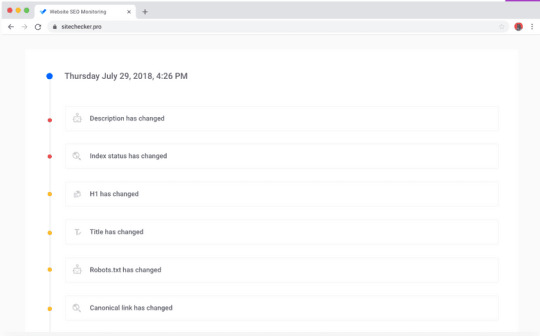
Conclusion
Whether it is good or bad news, organic traffic is no longer about rankings. In fact, you may well be ranking #1 (i.e. get featured) and notice a decrease in clickthrough once your page is promoted. But, you can experiment with all kinds of ways to improve your organic clickthrough without investing more into your rankings, even though organic CTR is much harder to predict these days.
0 notes
Text
How to Improve Organic Clickthrough for Your Content
Google search result pages are becoming more diverse and even interactive, which makes any clickthrough study out there much less reliable, because no two sets of search results are the same.
But how much control do writers and content creators have over how their content is represented in search? As it turns out, they do have quite a few options when it comes to optimizing their search snippets!
The anatomy of a standard search snippet
The standard Google search snippet has changed over the years, but in essence all the key elements are still there:
The clickable title or headline of the snippet (in blue)
The description of that page (about two lines long — it was lengthened for no particular reason a few years ago, but now seems to be back to two lines)
The URL path (used to be in green, now it is black)
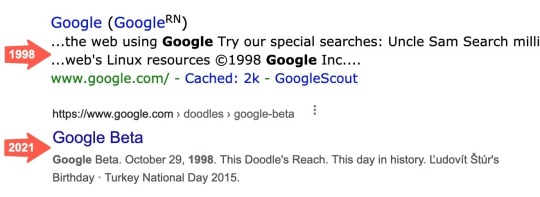
On a mobile device, there’s also a tiny logo next to the URL:

Here’s how much control you have over these standard elements of your search snippet (in the order they currently appear):
Logo
Google will use your site favicon when deciding which image to show next to your URL. This means that you have full control over this part of the search snippet.
URL path
These days, Google will do its best to show the meaningful URL path (almost like a breadcrumb) instead of simply the URL of the page. This consists of:
The domain: I don’t have any research to support this, but I personally always scan domain names when choosing what to click. That being said, your choice of a domain name may somewhat impact your clickthrough (if you do a particularly good job picking a snappy domain name that intrigues) and you do have full control over this part of the snippet. Tools like Namify specialize in finding exactly that type of domains that are short, memorable, and witty.
The breadcrumb or the truncated URL: You can use breadcrumb schema to force Google to use breadcrumb instead of the URL, and watch your Search Console to see if that helped clickthrough:
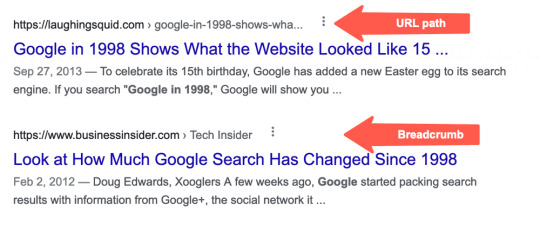
Title
Google used to rely on the page title to generate the title of the search snippet, but it has been rewriting that part more and more often recently.
That being said, it is still recommended to optimize your title to include keywords and entice more clicks — and hope Google will keep it intact.
Description
Google has been generating the search snippet description for years without using the associated meta description: recent studies show that Google ignores meta descriptions in about 70% of cases.
You may still want to create meta descriptions in case Google needs some clues, but expect them to figure this part out on their own.
Another way to try and trick Google into using your chosen snippet description is to create concise summaries of the content and add it at the beginning of the article. Using semantic analysis tools like Text Optimizer, you can also ensure these summaries are semantically relevant to the topic:
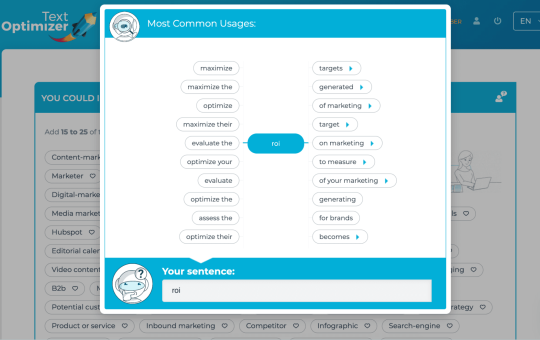
Now, let’s see how we can enhance that standard search snippet to let it stand out and attract more clicks.
Rich snippets for content-based pages
Rich snippets are search snippets enhanced with some additional details. Web publishers can control rich snippets by adding schema markup, so they are thus under website owners’ control.
Here are the types of rich snippets that will work for content-based pages:
FAQ page
Your page doesn’t have to be FAQ to qualify for this rich snippet. All you need to do is answer two or more subsequent questions somewhere on that page to use the code. There are several Wordpress plugins — including this one — that help you code that section.
HowTo schema
The HowTo schema was introduced for the DIY niche as a way to feature snippets that include step-by-step instructions.
These days, I see HowTo rich snippets implemented for just about any tutorial:
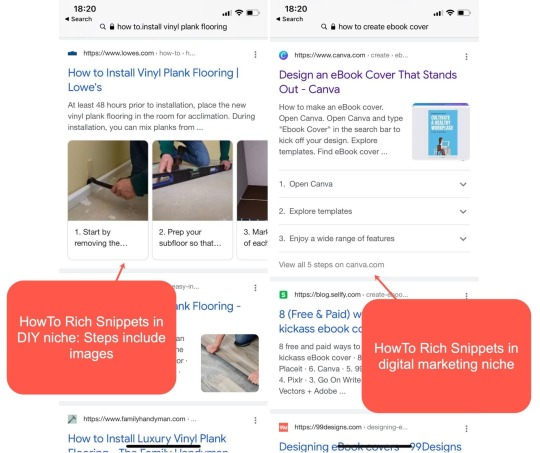
Video schema
More often than not, these rich snippets show up only on mobile devices, but they seem to be very common. A video rich snippet includes a video thumbnail:

Video schema will help you ensure the rich snippet is indeed generated, although I’ve seen dozens of cases when Google creates a rich snippet once you simply embed a video on the page, no schema required.
That being said, using the rich code won’t hurt, especially given there’s an easy video schema generator for you to create a code easily.
Structured snippets
Structured snippets are less popular than rich snippets, even though they are very common on search.
Structured snippets import tabular data to formulate a more informative search snippet:
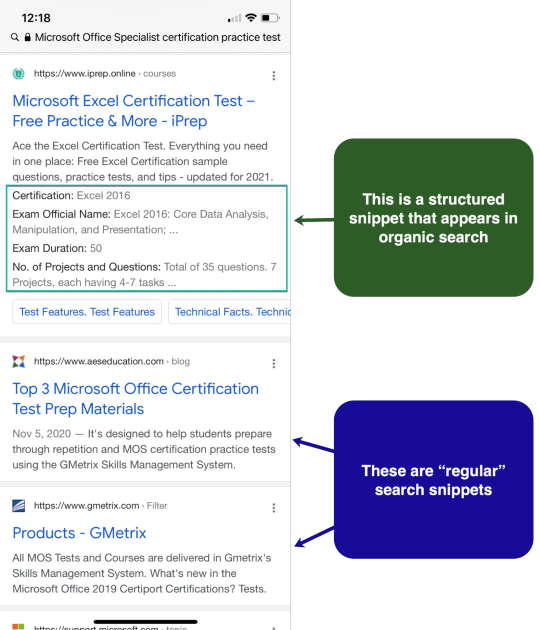
All it takes to qualify for this type of a snippet is to create an HTML table. It is a good idea to use tables for summaries, feature comparisons, lists, etc.
Image thumbnails
Image thumbnails are very rare on desktop. Yet on mobile devices, images show up inside most search snippets:

There’s no particular optimization tactic here, but there are best practices that may or may not help:
Obviously, make sure there’s at least one image on your landing page (make it featured on Wordpress).
Compress your image to make it load faster.
Specify the thumbnail using the meta tag.
Dates
Google shows dates within a search snippet when they think this may be useful to a searcher. Obviously, dates may have a big impact on clicking patterns: Based on the research by Ignite Visibility, about half of searchers claim that dates in search snippets are either “important” or “very important” clickthrough factors.
People may feel willing to click on a search snippet with a more recent date.
They can scroll past an older date even when the page ranks on top.
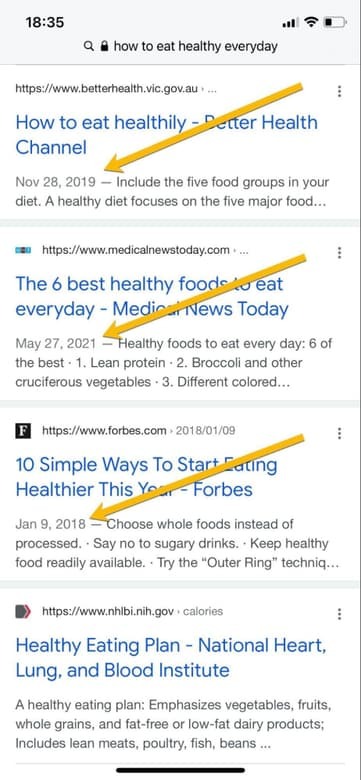
Google has clear guidelines as to how web publishers can keep those dates fresh:
Don’t try to hide dates, because they are useful.
When updating a piece, re-publish it on a new date only when you’ve basically rewritten it.(I.e., don’t redirect, better to update the old piece and change the publish date).
Include an “Updated on” note on top of the article if you updated it (Google will pick up on that date).
Using schema “datePublished” and “dateModified” is not required but will be helpful.
Google will understand all of the following date formats:
Published December 4, 2019
Posted Dec 4, 2020
Last updated: Dec 14, 2018
Updated Dec 14, 2021 8pm ET
Mini sitelinks
Mini sitelinks are probably the most unpredictable element of a search snippet. Google may randomly pick links from navigation, tag, or category links, etc. There’s also no way to tell Google they made a poor choice.
Unlike sitelinks, which usually show up for the top-ranking result and mostly for branded searches, mini sitelinks can be generated for just about any result out there.
Mini sitelinks represent a very useful feature, though, because they increase your odds that your search snippet will get a click (by adding more clickable links to your snippet).
One way to increase your chances that Google will show mini sitelinks within your search snippet is to use an on-page table of contents (which is powered by HTML anchor links).
Here’s an example of the table of contents:
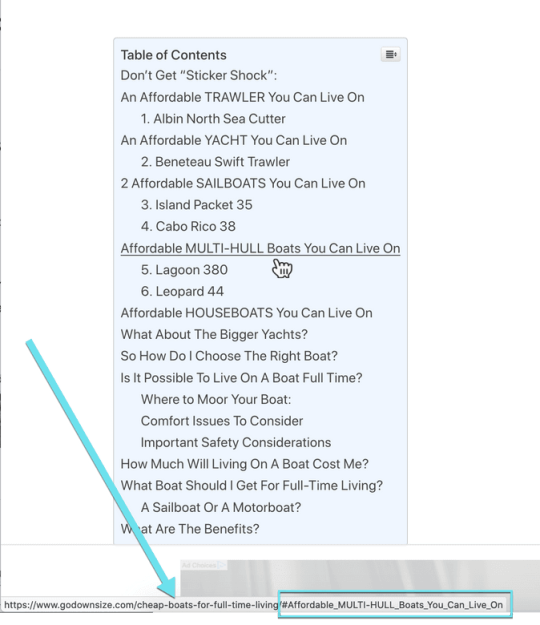
And here are the mini sitelinks they generate:

Featured snippets
As of January 2020, featured snippets were officially considered the #1 organic result (previously they were “position zero” — appearing before the top organic result).
It still remains a big question whether they get clicked more than “normal looking” search results, or whether they are comprehensive enough to get fewer clicks. However, recent research suggests they’re still important for SEO.
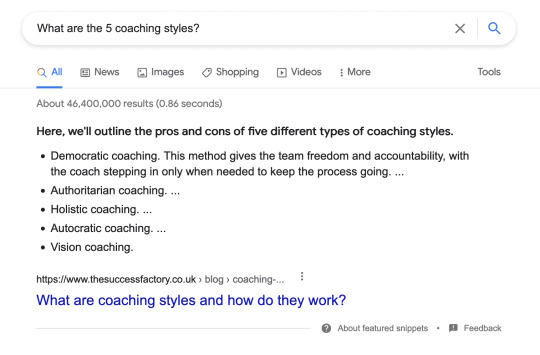
With that being said, featured snippets are not easy to predict, but if you choose to optimize for them, be sure to check my older Moz column that is still very valid: How to Optimize for Featured Snippets. Just don’t forget to monitor your clickthrough to ensure getting featured didn’t hurt.
Indented results
Showing intended results is a relatively new trend. So far it is not clear how exactly to get that type of search snippet, but you can track them in tools like STAT.
Complementing your product page with how-to content on the same topic may be a good idea (Google may decide to rank both as indented results). At least this is something to experiment with.
Monitoring and measuring
While rank monitoring is pretty straightforward, this kind of optimization is harder to monitor because your rankings remain the same. Here are two tools you can use:
1. Google Search Console
Google Search Console provides clear clickthrough data that can help you signal of positive or negative impact of your optimization efforts:
In the Performance tab, click in the date range filter (it usually defaults to three months), go to “Compare” tab and select “Compare last 3 months year over year”:
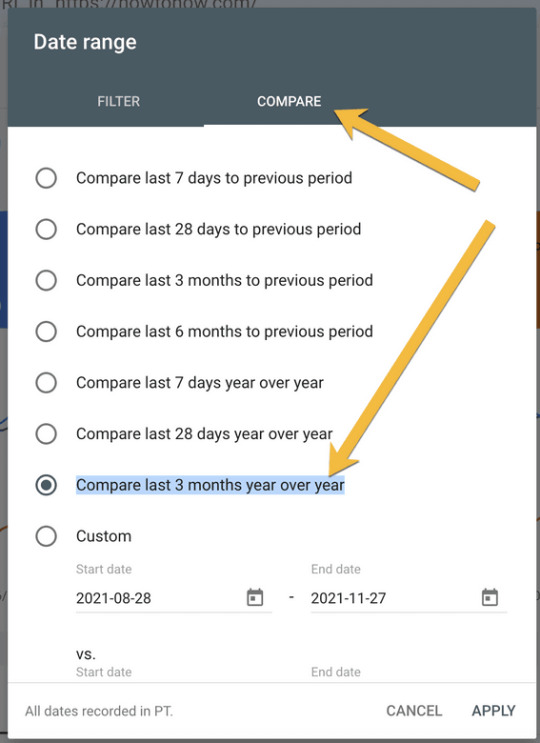
From there, you can click to “Pages” or “Queries” tab to identify pages or search queries that have lost organic traffic from the past year (especially if there was no substantial position change):

2. WebCEO
WebCEO provides a more convenient way to keep an eye on your keywords that are losing clicks. The tool has a separate tag and a notification system alerting you of any queries that see a decline in clicks:
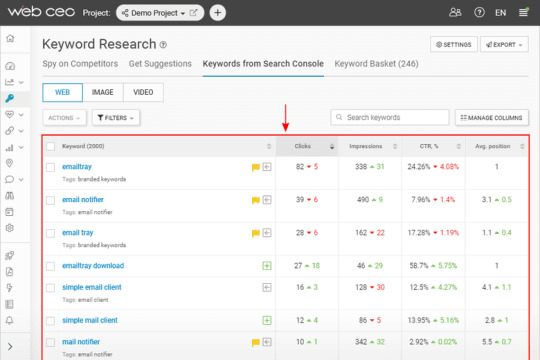
3. Visualping
Another useful tool here is Visualping that you can set to monitor your exact search snippet to be alerted when it changes:
This is a great way to correlate your optimization with the actual change that happened (and then clickthrough change).
Using SiteChecker’s website monitoring tool you can also monitor your competitors’ pages and correlate their edits to an improved search snippet:

Conclusion
Whether it is good or bad news, organic traffic is no longer about rankings. In fact, you may well be ranking #1 (i.e. get featured) and notice a decrease in clickthrough once your page is promoted. But, you can experiment with all kinds of ways to improve your organic clickthrough without investing more into your rankings, even though organic CTR is much harder to predict these days.
0 notes
Text
How to Improve Organic Clickthrough for Your Content
Google search result pages are becoming more diverse and even interactive, which makes any clickthrough study out there much less reliable, because no two sets of search results are the same.
But how much control do writers and content creators have over how their content is represented in search? As it turns out, they do have quite a few options when it comes to optimizing their search snippets!
The anatomy of a standard search snippet
The standard Google search snippet has changed over the years, but in essence all the key elements are still there:
The clickable title or headline of the snippet (in blue)
The description of that page (about two lines long — it was lengthened for no particular reason a few years ago, but now seems to be back to two lines)
The URL path (used to be in green, now it is black)

On a mobile device, there’s also a tiny logo next to the URL:

Here’s how much control you have over these standard elements of your search snippet (in the order they currently appear):
Logo
Google will use your site favicon when deciding which image to show next to your URL. This means that you have full control over this part of the search snippet.
URL path
These days, Google will do its best to show the meaningful URL path (almost like a breadcrumb) instead of simply the URL of the page. This consists of:
The domain: I don’t have any research to support this, but I personally always scan domain names when choosing what to click. That being said, your choice of a domain name may somewhat impact your clickthrough (if you do a particularly good job picking a snappy domain name that intrigues) and you do have full control over this part of the snippet. Tools like Namify specialize in finding exactly that type of domains that are short, memorable, and witty.
The breadcrumb or the truncated URL: You can use breadcrumb schema to force Google to use breadcrumb instead of the URL, and watch your Search Console to see if that helped clickthrough:

Title
Google used to rely on the page title to generate the title of the search snippet, but it has been rewriting that part more and more often recently.
That being said, it is still recommended to optimize your title to include keywords and entice more clicks — and hope Google will keep it intact.
Description
Google has been generating the search snippet description for years without using the associated meta description: recent studies show that Google ignores meta descriptions in about 70% of cases.
You may still want to create meta descriptions in case Google needs some clues, but expect them to figure this part out on their own.
Another way to try and trick Google into using your chosen snippet description is to create concise summaries of the content and add it at the beginning of the article. Using semantic analysis tools like Text Optimizer, you can also ensure these summaries are semantically relevant to the topic:
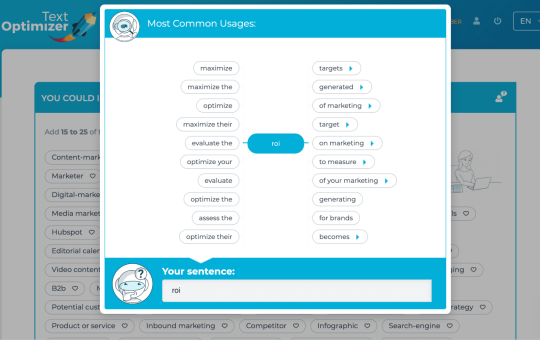
Now, let’s see how we can enhance that standard search snippet to let it stand out and attract more clicks.
Rich snippets for content-based pages
Rich snippets are search snippets enhanced with some additional details. Web publishers can control rich snippets by adding schema markup, so they are thus under website owners’ control.
Here are the types of rich snippets that will work for content-based pages:
FAQ page
Your page doesn’t have to be FAQ to qualify for this rich snippet. All you need to do is answer two or more subsequent questions somewhere on that page to use the code. There are several Wordpress plugins — including this one — that help you code that section.
HowTo schema
The HowTo schema was introduced for the DIY niche as a way to feature snippets that include step-by-step instructions.
These days, I see HowTo rich snippets implemented for just about any tutorial:

Video schema
More often than not, these rich snippets show up only on mobile devices, but they seem to be very common. A video rich snippet includes a video thumbnail:

Video schema will help you ensure the rich snippet is indeed generated, although I’ve seen dozens of cases when Google creates a rich snippet once you simply embed a video on the page, no schema required.
That being said, using the rich code won’t hurt, especially given there’s an easy video schema generator for you to create a code easily.
Structured snippets
Structured snippets are less popular than rich snippets, even though they are very common on search.
Structured snippets import tabular data to formulate a more informative search snippet:
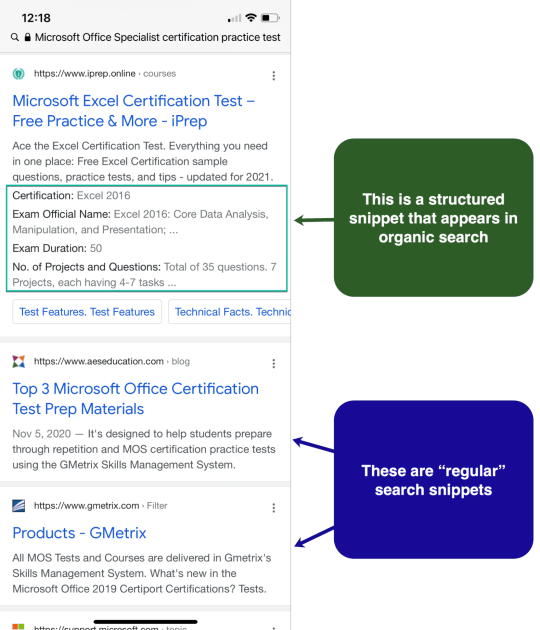
All it takes to qualify for this type of a snippet is to create an HTML table. It is a good idea to use tables for summaries, feature comparisons, lists, etc.
Image thumbnails
Image thumbnails are very rare on desktop. Yet on mobile devices, images show up inside most search snippets:
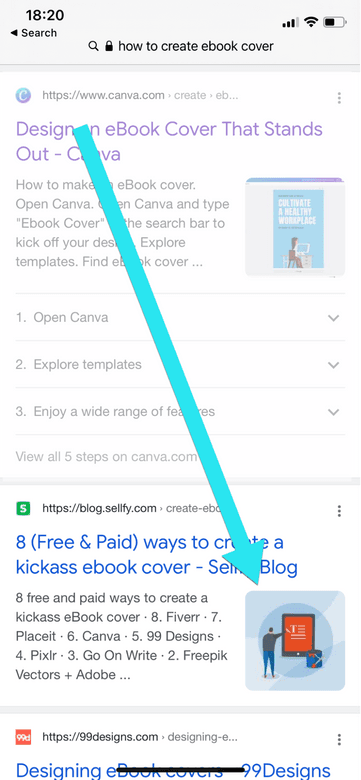
There’s no particular optimization tactic here, but there are best practices that may or may not help:
Obviously, make sure there’s at least one image on your landing page (make it featured on Wordpress).
Compress your image to make it load faster.
Specify the thumbnail using the meta tag.
Dates
Google shows dates within a search snippet when they think this may be useful to a searcher. Obviously, dates may have a big impact on clicking patterns: Based on the research by Ignite Visibility, about half of searchers claim that dates in search snippets are either “important” or “very important” clickthrough factors.
People may feel willing to click on a search snippet with a more recent date.
They can scroll past an older date even when the page ranks on top.

Google has clear guidelines as to how web publishers can keep those dates fresh:
Don’t try to hide dates, because they are useful.
When updating a piece, re-publish it on a new date only when you’ve basically rewritten it.(I.e., don’t redirect, better to update the old piece and change the publish date).
Include an “Updated on” note on top of the article if you updated it (Google will pick up on that date).
Using schema “datePublished” and “dateModified” is not required but will be helpful.
Google will understand all of the following date formats:
Published December 4, 2019
Posted Dec 4, 2020
Last updated: Dec 14, 2018
Updated Dec 14, 2021 8pm ET
Mini sitelinks
Mini sitelinks are probably the most unpredictable element of a search snippet. Google may randomly pick links from navigation, tag, or category links, etc. There’s also no way to tell Google they made a poor choice.
Unlike sitelinks, which usually show up for the top-ranking result and mostly for branded searches, mini sitelinks can be generated for just about any result out there.
Mini sitelinks represent a very useful feature, though, because they increase your odds that your search snippet will get a click (by adding more clickable links to your snippet).
One way to increase your chances that Google will show mini sitelinks within your search snippet is to use an on-page table of contents (which is powered by HTML anchor links).
Here’s an example of the table of contents:

And here are the mini sitelinks they generate:

Featured snippets
As of January 2020, featured snippets were officially considered the #1 organic result (previously they were “position zero” — appearing before the top organic result).
It still remains a big question whether they get clicked more than “normal looking” search results, or whether they are comprehensive enough to get fewer clicks. However, recent research suggests they’re still important for SEO.

With that being said, featured snippets are not easy to predict, but if you choose to optimize for them, be sure to check my older Moz column that is still very valid: How to Optimize for Featured Snippets. Just don’t forget to monitor your clickthrough to ensure getting featured didn’t hurt.
Indented results
Showing intended results is a relatively new trend. So far it is not clear how exactly to get that type of search snippet, but you can track them in tools like STAT.
Complementing your product page with how-to content on the same topic may be a good idea (Google may decide to rank both as indented results). At least this is something to experiment with.
Monitoring and measuring
While rank monitoring is pretty straightforward, this kind of optimization is harder to monitor because your rankings remain the same. Here are two tools you can use:
1. Google Search Console
Google Search Console provides clear clickthrough data that can help you signal of positive or negative impact of your optimization efforts:
In the Performance tab, click in the date range filter (it usually defaults to three months), go to “Compare” tab and select “Compare last 3 months year over year”:

From there, you can click to “Pages” or “Queries” tab to identify pages or search queries that have lost organic traffic from the past year (especially if there was no substantial position change):
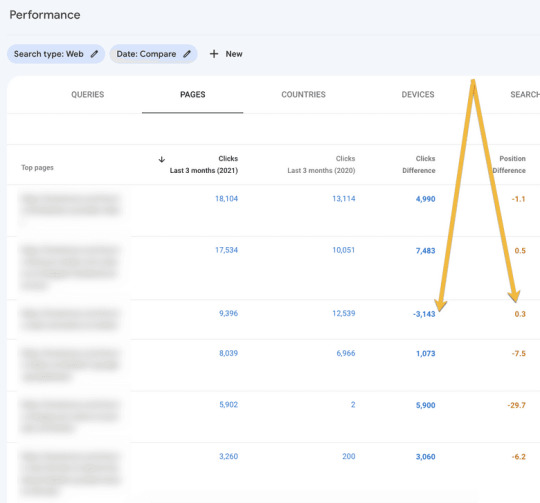
2. WebCEO
WebCEO provides a more convenient way to keep an eye on your keywords that are losing clicks. The tool has a separate tag and a notification system alerting you of any queries that see a decline in clicks:
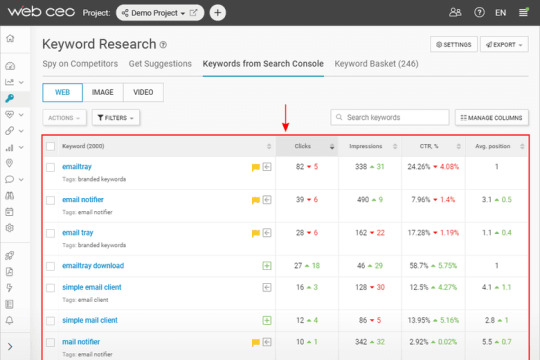
3. Visualping
Another useful tool here is Visualping that you can set to monitor your exact search snippet to be alerted when it changes:
This is a great way to correlate your optimization with the actual change that happened (and then clickthrough change).
Using SiteChecker’s website monitoring tool you can also monitor your competitors’ pages and correlate their edits to an improved search snippet:

Conclusion
Whether it is good or bad news, organic traffic is no longer about rankings. In fact, you may well be ranking #1 (i.e. get featured) and notice a decrease in clickthrough once your page is promoted. But, you can experiment with all kinds of ways to improve your organic clickthrough without investing more into your rankings, even though organic CTR is much harder to predict these days.
0 notes
Text
Get the Best Business Name Generator by Namify. tech
A proper name is one that accurately displays your personality and describes your company. With our business name generator, Namify. tech provides distinctive name suggestions.

https://namify.tech/business-name-generator
0 notes
Text
How to Improve Organic Clickthrough for Your Content
Google search result pages are becoming more diverse and even interactive, which makes any clickthrough study out there much less reliable, because no two sets of search results are the same.
But how much control do writers and content creators have over how their content is represented in search? As it turns out, they do have quite a few options when it comes to optimizing their search snippets!
The anatomy of a standard search snippet
The standard Google search snippet has changed over the years, but in essence all the key elements are still there:
The clickable title or headline of the snippet (in blue)
The description of that page (about two lines long — it was lengthened for no particular reason a few years ago, but now seems to be back to two lines)
The URL path (used to be in green, now it is black)

On a mobile device, there’s also a tiny logo next to the URL:
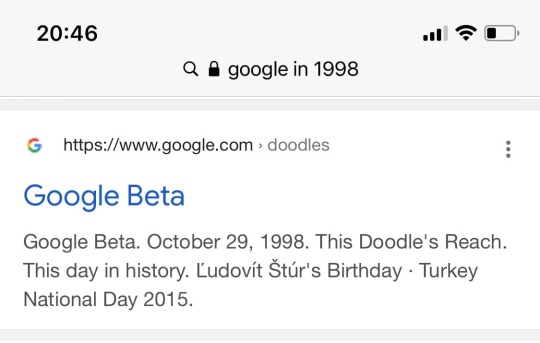
Here’s how much control you have over these standard elements of your search snippet (in the order they currently appear):
Logo
Google will use your site favicon when deciding which image to show next to your URL. This means that you have full control over this part of the search snippet.
URL path
These days, Google will do its best to show the meaningful URL path (almost like a breadcrumb) instead of simply the URL of the page. This consists of:
The domain: I don’t have any research to support this, but I personally always scan domain names when choosing what to click. That being said, your choice of a domain name may somewhat impact your clickthrough (if you do a particularly good job picking a snappy domain name that intrigues) and you do have full control over this part of the snippet. Tools like Namify specialize in finding exactly that type of domains that are short, memorable, and witty.
The breadcrumb or the truncated URL: You can use breadcrumb schema to force Google to use breadcrumb instead of the URL, and watch your Search Console to see if that helped clickthrough:
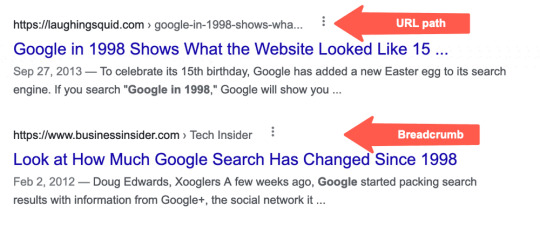
Title
Google used to rely on the page title to generate the title of the search snippet, but it has been rewriting that part more and more often recently.
That being said, it is still recommended to optimize your title to include keywords and entice more clicks — and hope Google will keep it intact.
Description
Google has been generating the search snippet description for years without using the associated meta description: recent studies show that Google ignores meta descriptions in about 70% of cases.
You may still want to create meta descriptions in case Google needs some clues, but expect them to figure this part out on their own.
Another way to try and trick Google into using your chosen snippet description is to create concise summaries of the content and add it at the beginning of the article. Using semantic analysis tools like Text Optimizer, you can also ensure these summaries are semantically relevant to the topic:
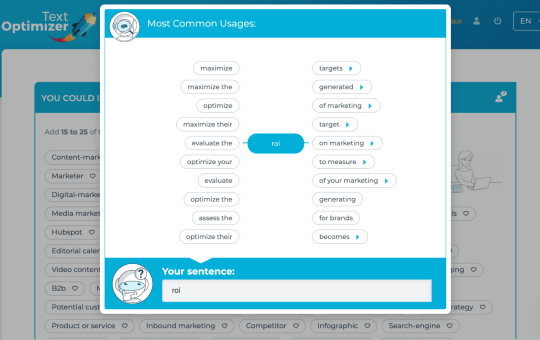
Now, let’s see how we can enhance that standard search snippet to let it stand out and attract more clicks.
Rich snippets for content-based pages
Rich snippets are search snippets enhanced with some additional details. Web publishers can control rich snippets by adding schema markup, so they are thus under website owners’ control.
Here are the types of rich snippets that will work for content-based pages:
FAQ page
Your page doesn’t have to be FAQ to qualify for this rich snippet. All you need to do is answer two or more subsequent questions somewhere on that page to use the code. There are several Wordpress plugins — including this one — that help you code that section.
HowTo schema
The HowTo schema was introduced for the DIY niche as a way to feature snippets that include step-by-step instructions.
These days, I see HowTo rich snippets implemented for just about any tutorial:

Video schema
More often than not, these rich snippets show up only on mobile devices, but they seem to be very common. A video rich snippet includes a video thumbnail:
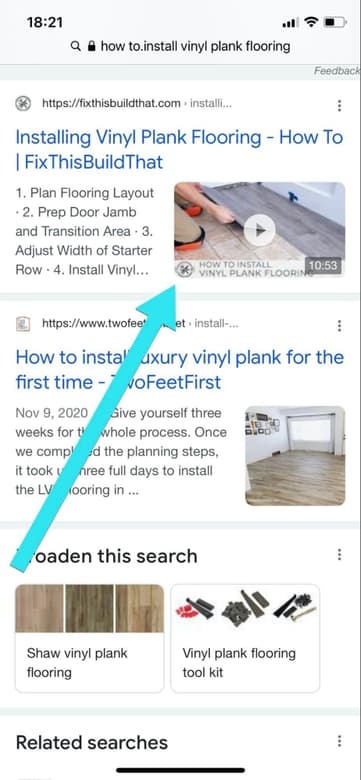
Video schema will help you ensure the rich snippet is indeed generated, although I’ve seen dozens of cases when Google creates a rich snippet once you simply embed a video on the page, no schema required.
That being said, using the rich code won’t hurt, especially given there’s an easy video schema generator for you to create a code easily.
Structured snippets
Structured snippets are less popular than rich snippets, even though they are very common on search.
Structured snippets import tabular data to formulate a more informative search snippet:
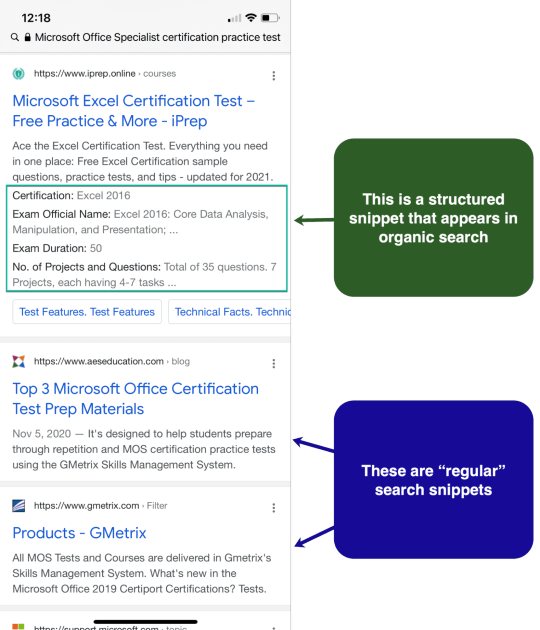
All it takes to qualify for this type of a snippet is to create an HTML table. It is a good idea to use tables for summaries, feature comparisons, lists, etc.
Image thumbnails
Image thumbnails are very rare on desktop. Yet on mobile devices, images show up inside most search snippets:

There’s no particular optimization tactic here, but there are best practices that may or may not help:
Obviously, make sure there’s at least one image on your landing page (make it featured on Wordpress).
Compress your image to make it load faster.
Specify the thumbnail using the meta tag.
Dates
Google shows dates within a search snippet when they think this may be useful to a searcher. Obviously, dates may have a big impact on clicking patterns: Based on the research by Ignite Visibility, about half of searchers claim that dates in search snippets are either “important” or “very important” clickthrough factors.
People may feel willing to click on a search snippet with a more recent date.
They can scroll past an older date even when the page ranks on top.
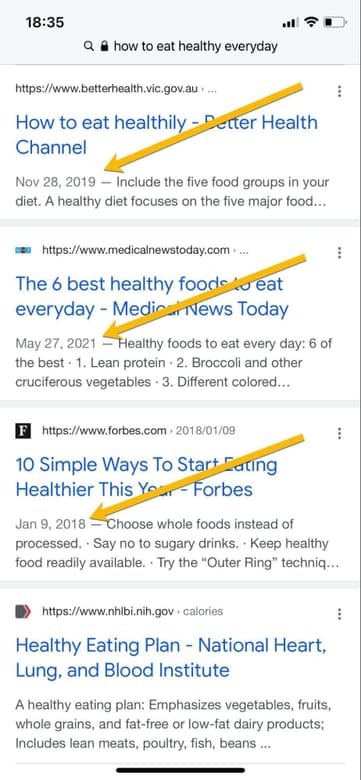
Google has clear guidelines as to how web publishers can keep those dates fresh:
Don’t try to hide dates, because they are useful.
When updating a piece, re-publish it on a new date only when you’ve basically rewritten it.(I.e., don’t redirect, better to update the old piece and change the publish date).
Include an “Updated on” note on top of the article if you updated it (Google will pick up on that date).
Using schema “datePublished” and “dateModified” is not required but will be helpful.
Google will understand all of the following date formats:
Published December 4, 2019
Posted Dec 4, 2020
Last updated: Dec 14, 2018
Updated Dec 14, 2021 8pm ET
Mini sitelinks
Mini sitelinks are probably the most unpredictable element of a search snippet. Google may randomly pick links from navigation, tag, or category links, etc. There’s also no way to tell Google they made a poor choice.
Unlike sitelinks, which usually show up for the top-ranking result and mostly for branded searches, mini sitelinks can be generated for just about any result out there.
Mini sitelinks represent a very useful feature, though, because they increase your odds that your search snippet will get a click (by adding more clickable links to your snippet).
One way to increase your chances that Google will show mini sitelinks within your search snippet is to use an on-page table of contents (which is powered by HTML anchor links).
Here’s an example of the table of contents:

And here are the mini sitelinks they generate:

Featured snippets
As of January 2020, featured snippets were officially considered the #1 organic result (previously they were “position zero” — appearing before the top organic result).
It still remains a big question whether they get clicked more than “normal looking” search results, or whether they are comprehensive enough to get fewer clicks. However, recent research suggests they’re still important for SEO.
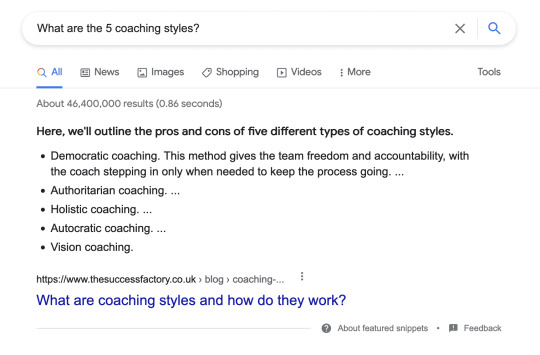
With that being said, featured snippets are not easy to predict, but if you choose to optimize for them, be sure to check my older Moz column that is still very valid: How to Optimize for Featured Snippets. Just don’t forget to monitor your clickthrough to ensure getting featured didn’t hurt.
Indented results
Showing intended results is a relatively new trend. So far it is not clear how exactly to get that type of search snippet, but you can track them in tools like STAT.
Complementing your product page with how-to content on the same topic may be a good idea (Google may decide to rank both as indented results). At least this is something to experiment with.
Monitoring and measuring
While rank monitoring is pretty straightforward, this kind of optimization is harder to monitor because your rankings remain the same. Here are two tools you can use:
1. Google Search Console
Google Search Console provides clear clickthrough data that can help you signal of positive or negative impact of your optimization efforts:
In the Performance tab, click in the date range filter (it usually defaults to three months), go to “Compare” tab and select “Compare last 3 months year over year”:
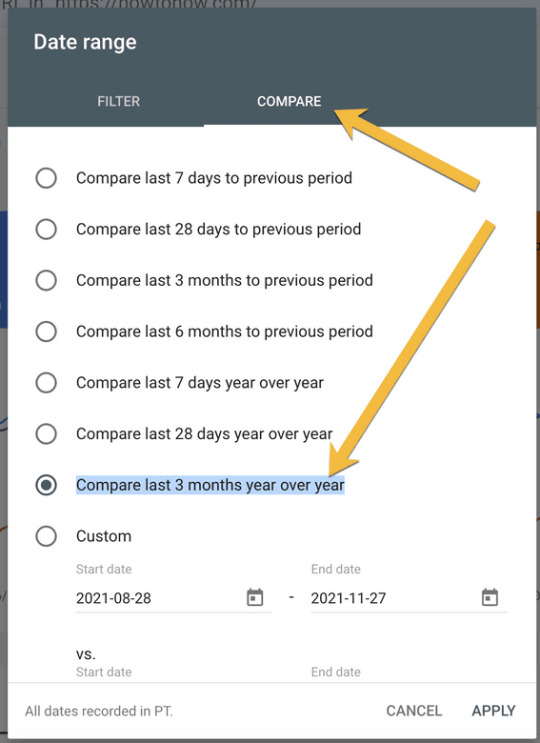
From there, you can click to “Pages” or “Queries” tab to identify pages or search queries that have lost organic traffic from the past year (especially if there was no substantial position change):
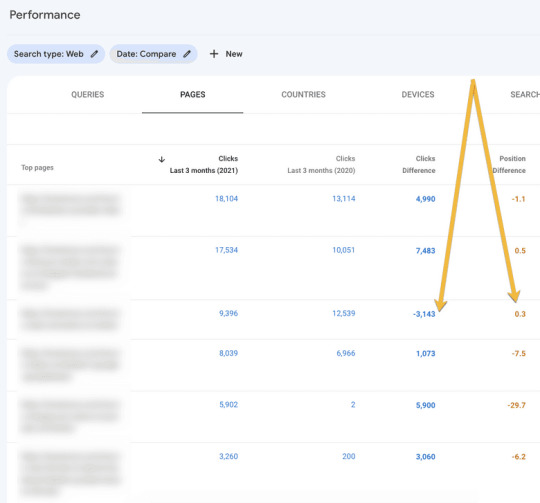
2. WebCEO
WebCEO provides a more convenient way to keep an eye on your keywords that are losing clicks. The tool has a separate tag and a notification system alerting you of any queries that see a decline in clicks:

3. Visualping
Another useful tool here is Visualping that you can set to monitor your exact search snippet to be alerted when it changes:
This is a great way to correlate your optimization with the actual change that happened (and then clickthrough change).
Using SiteChecker’s website monitoring tool you can also monitor your competitors’ pages and correlate their edits to an improved search snippet:
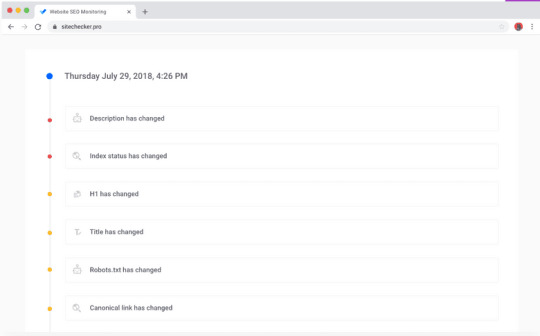
Conclusion
Whether it is good or bad news, organic traffic is no longer about rankings. In fact, you may well be ranking #1 (i.e. get featured) and notice a decrease in clickthrough once your page is promoted. But, you can experiment with all kinds of ways to improve your organic clickthrough without investing more into your rankings, even though organic CTR is much harder to predict these days.
0 notes